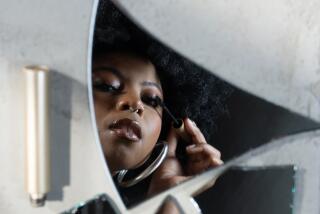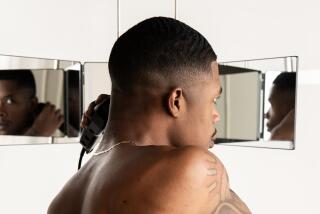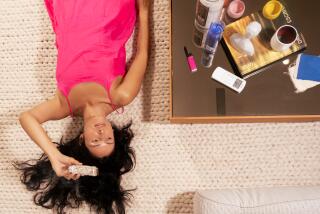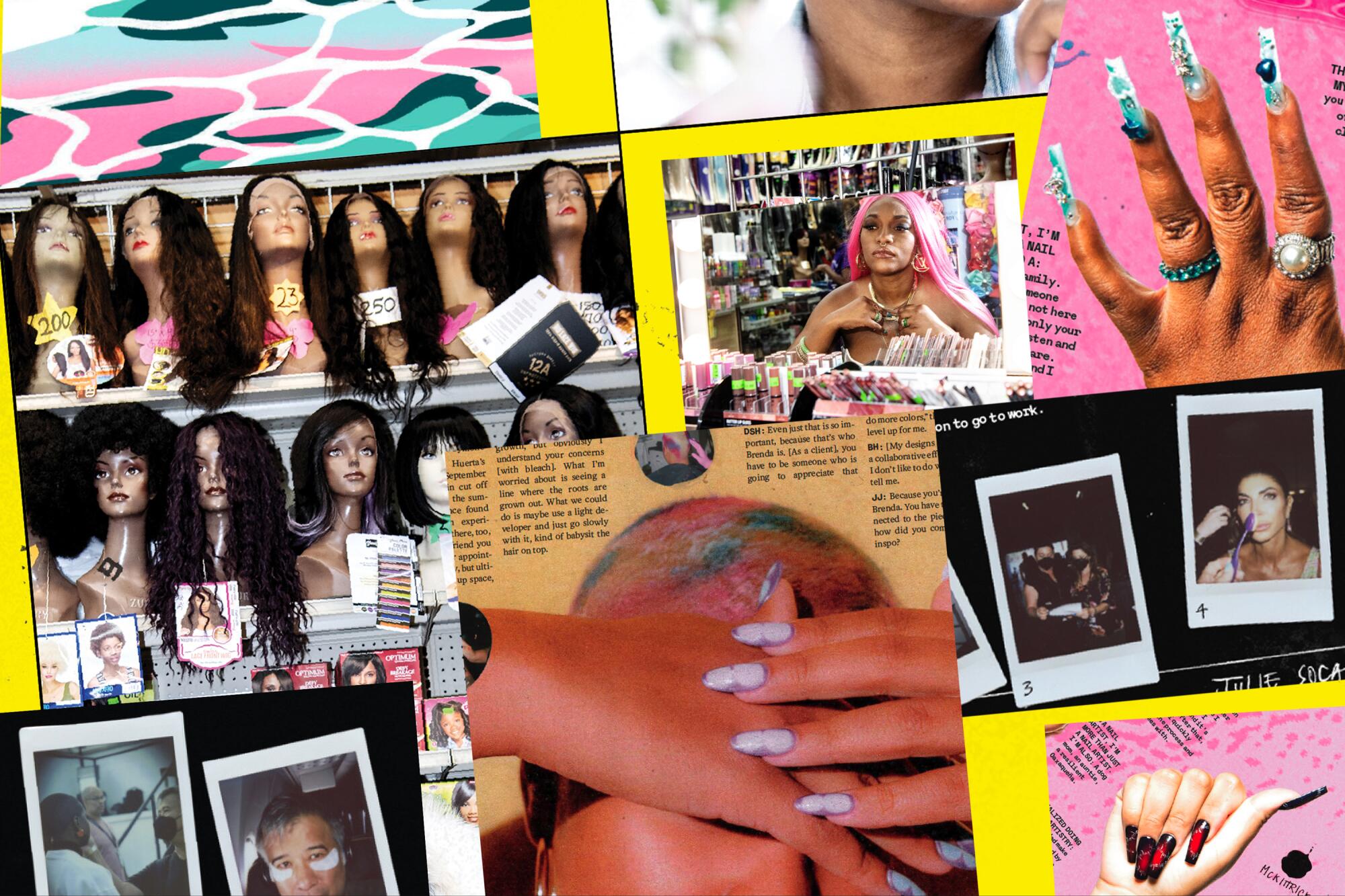
Where is beauty in L.A. really going? Just follow the people tasked with making people more beautiful every day. What follows is a snapshot of L.A.’s vibrant beauty scene. In this zine, beauty editor-at-large Darian Symoné Harvin pays a visit to the Slauson Super Mall with Lizzo’s hair guru, Shelby Swain. Julissa James offers a peek inside the life of Hollywood’s beauty artists. Five of the best nail artists in the city show why it pays to take note of the details. Angie Wang takes us to the Korean Spa for a day of self-care. And @c0mptonkitty shows us why the best hair designs are a collaborative effort.
This zine is part of Image Issue 14, “Elevation,” where we examine beauty as a state of being, a process of realization. Read the whole issue here.
Chapter I
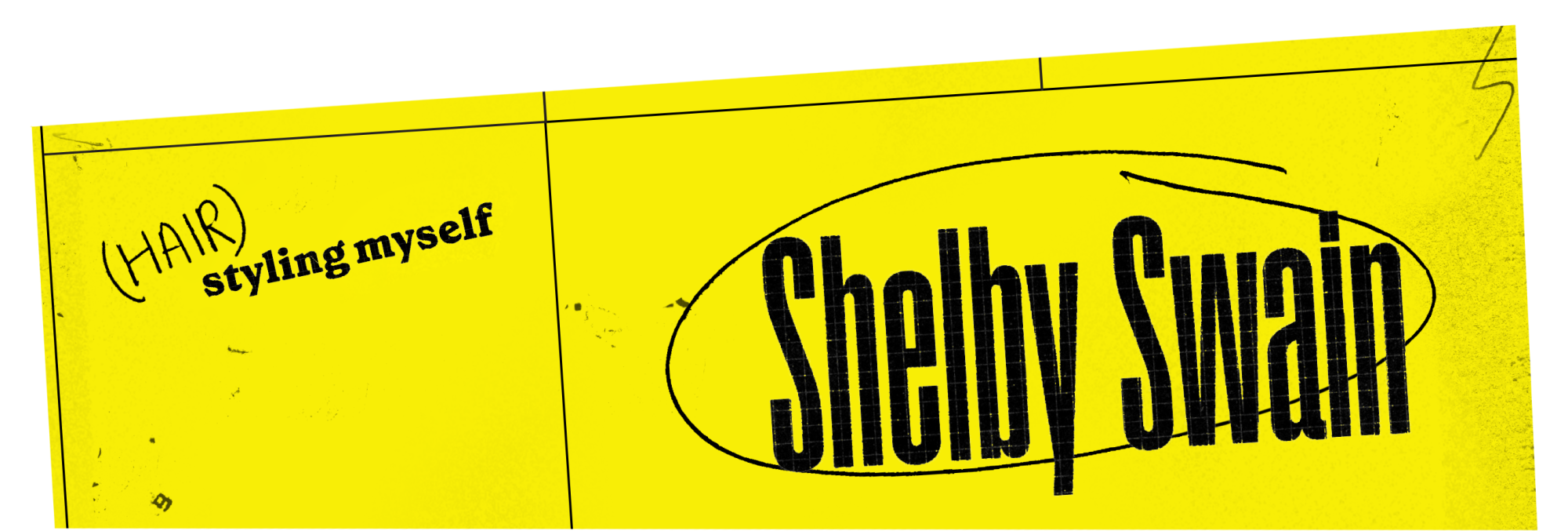
Shelbeniece La’Vira “Shelby” Swain may be known for her hair sculptures on Hollywood’s biggest names, but behind the hair chair, she is the star. And how could she not be? Swain is like an alchemist. The combination of her life path and her obsession with hair makes her an experience. She is the main hairstylist for Lizzo (the current queen of making a statement) and is known for her work on Zendaya (remember those faux locs at the 2015 Oscars that caused an uproar?), Saweetie, Bebe Rexha and Harry Styles.
“I come from an entrepreneurial family, so they always taught me the skills of teamwork,” says Swain. Her mother, aunt and sisters all come from the world of owning and operating preschools in L.A. “If I didn’t work at the preschool, I wouldn’t be who I am today because it taught me to be a team player.”
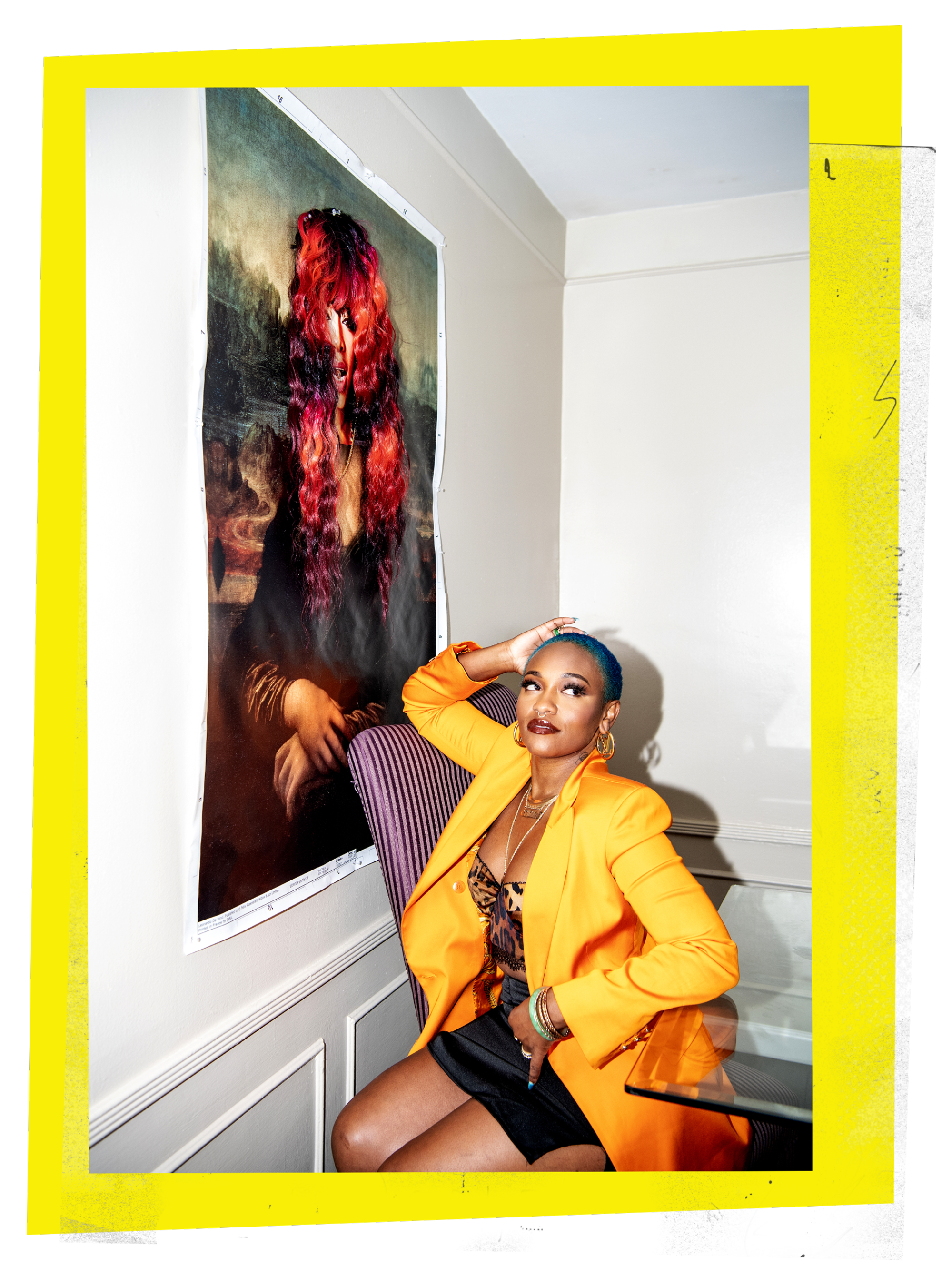
Swain, the youngest child, grew up in Gardena with two sisters who loved beauty — one went to hair school and was a MAC Pro makeup artist — but she really learned her craft by fending for herself. After she moved to the suburbs of Lake Elsinore and her sisters were no longer around, who was going to do her hair? It couldn’t always be her dad, who enjoyed the ritual. “No Black beauty salons, no beauty supplies. So I really had to learn how to start doing my own hair. From there, I had to do my homegirls’ hair.”
In her days working at the preschool, she’d sneak over to Miss Tammy’s salon across the street. Swain would help out as the shampoo girl — anything to be at the salon. She knew this was her world. She attended Los Angeles Trade Tech for two years, a brutal curriculum where lateness was not tolerated. Reality hair competitions “Shear Genius” and “Hair Battle Spectacular” changed her life.
I catch Swain in a rare moment: video calling in from her home in Inglewood. By now, she’s used to life on the road. In a matter of days, she’ll embark on a three-month tour with Lizzo.
A “Mona Trina” stares down at me behind Swain. That is, a “Mona Lisa” poster replaced with rapper Trina’s face. Swain spent hours cutting and crafting a shaggy, perfectly shaped red wig that lays flat against the wall, surrounding Trina’s face. (Honestly, this might be one of Trina’s best looks.) During our conversation, we talk about Swain’s fascination with putting hair on just about anything and how her brief stint taking psychology classes has served her as a beautician. After all, it’s close to being a lightworker.
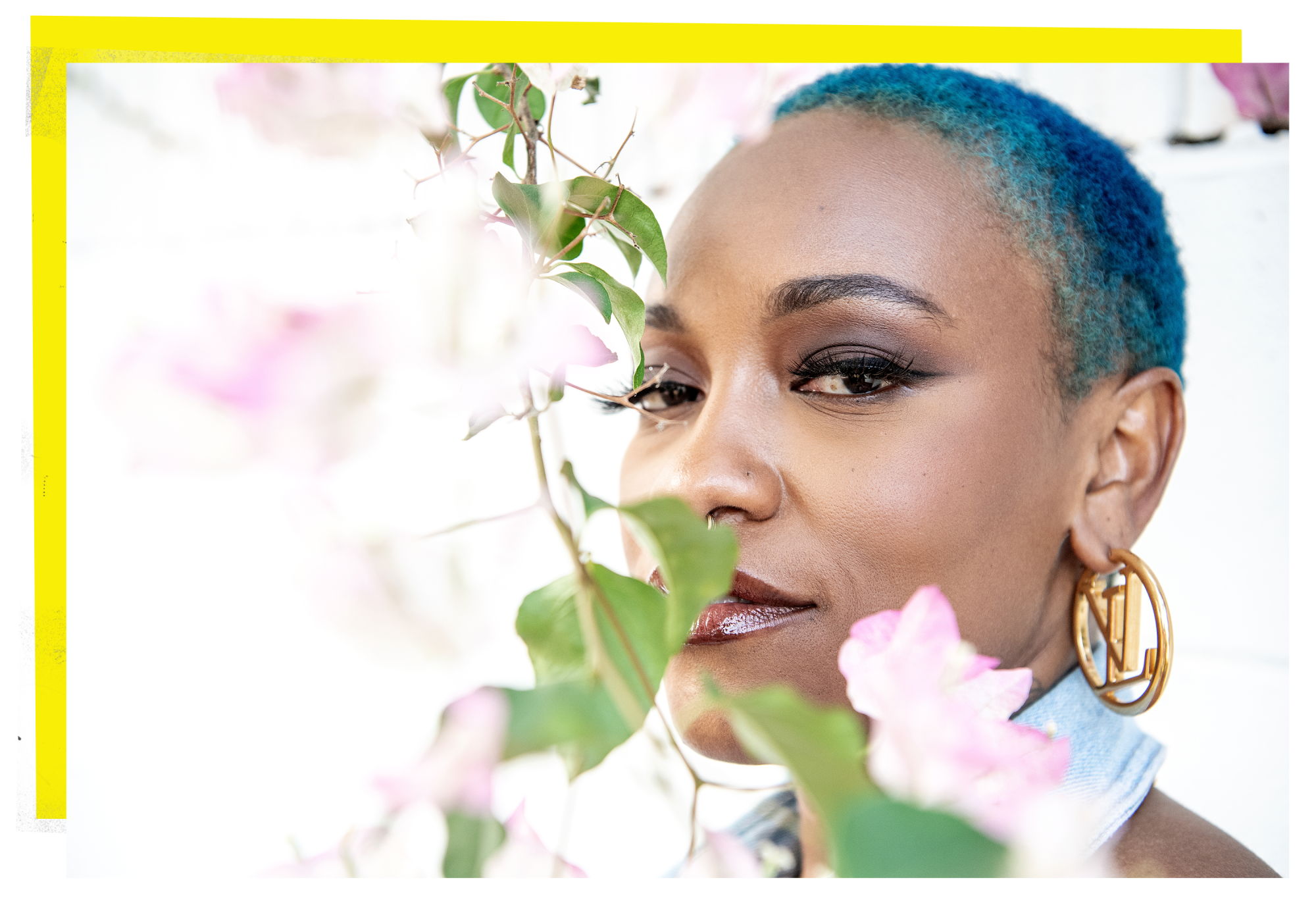
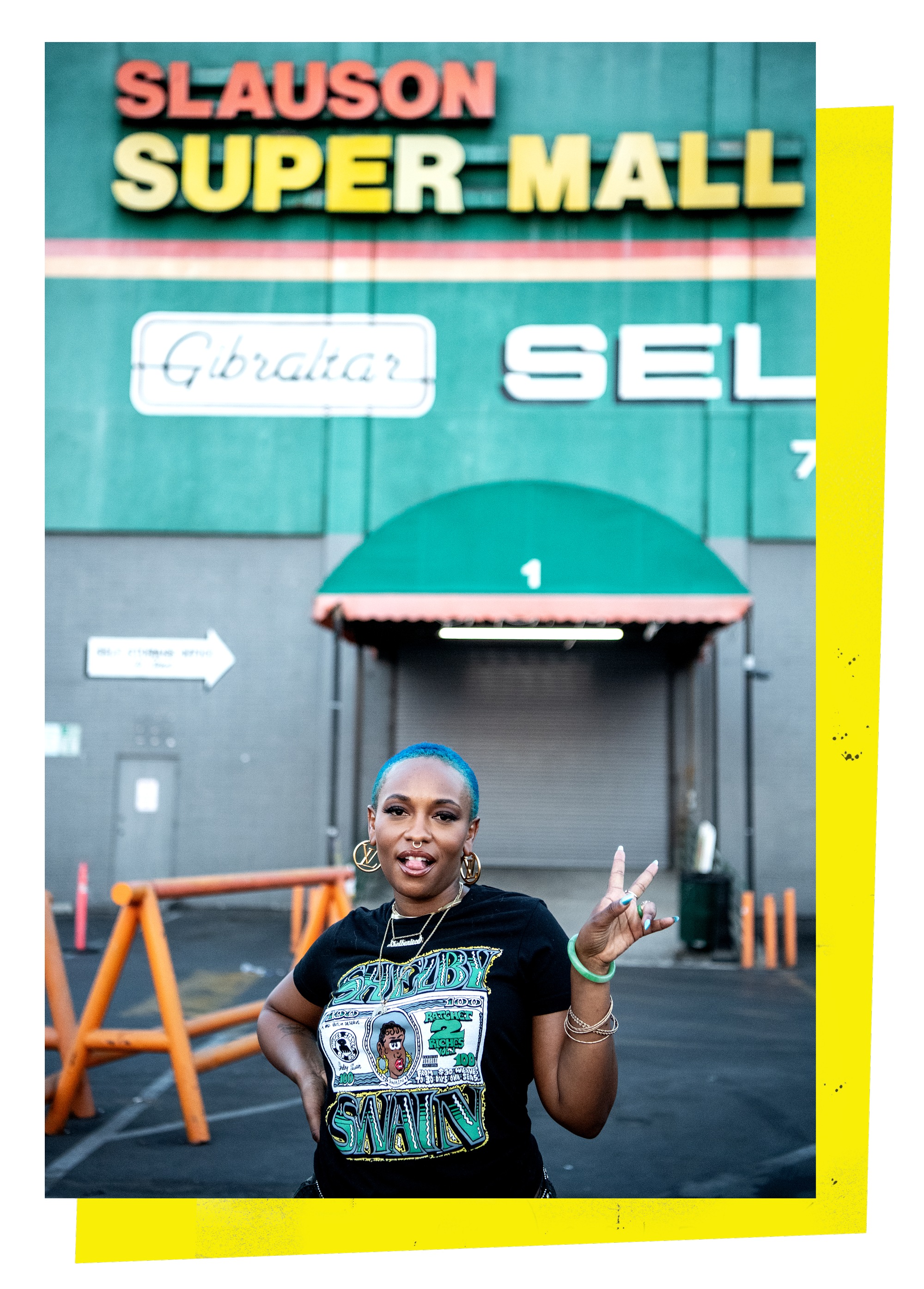
Darian Symoné Harvin: Besides “Mona Trina,” is there anything else that you have revamped, put hair on and made your own in your house?
Shelby Swain: I have a fan chair — one of those fan chairs they had in the ’80s — and I did a finger wave. I took the whole chair, and I covered it in hair. I stared at that chair for weeks trying to figure out how to do that because there’s nothing on YouTube. There’s nothing I can search on how to turn a chair into hair. How do I do this? It was so challenging. But it was lit when I finished it.
DSH: What have you learned about the creative process and your strength within a glam team?
SS: I’ve learned that sometimes it might not always be about you. Everything can’t always be a huge hair moment. Sometimes it’s the dress, sometimes it’s the makeup, but that’s what makes a great statement. [Hair and makeup] both have to be beautifully done and executed. I might not be able to put a helicopter on her head, you know what I’m saying? I might have to give her a beautiful, sleek ponytail, but it’s gonna be bomb! That’s what I have learned. Not every moment is a grand moment. And it’s fine. I think that’s the beauty about me. That’s what makes me a team player. And at the same time, it’s “OK, well, you want to do a ’60s mod eye? All right, cool. Well, let me get into my bag and help you create the ’60s look.” So I think I’m very easy and collaborative.
DSH: What’s your modus operandi on set?
SS: Being on set is completely different from what I learned in hair school. You think it’s one way and it’s not. They’re like, “You’re gonna be there for a few hours, make sure you wear all black, be very professional, keep conversation pretty much to a minimum and just work.” No. Set is 17-hour days. It can be hot as hell in there. I’m a creative and y’all hired me to create. So I’m gonna create this in whatever I’ll need to help me be the best. By any means necessary, we’re going to do whatever we have to do to make this story come to life. If I have to be a human fan, I will.
DSH: I’m curious about how you view your own work. When you really step back, how would you describe your artistry?
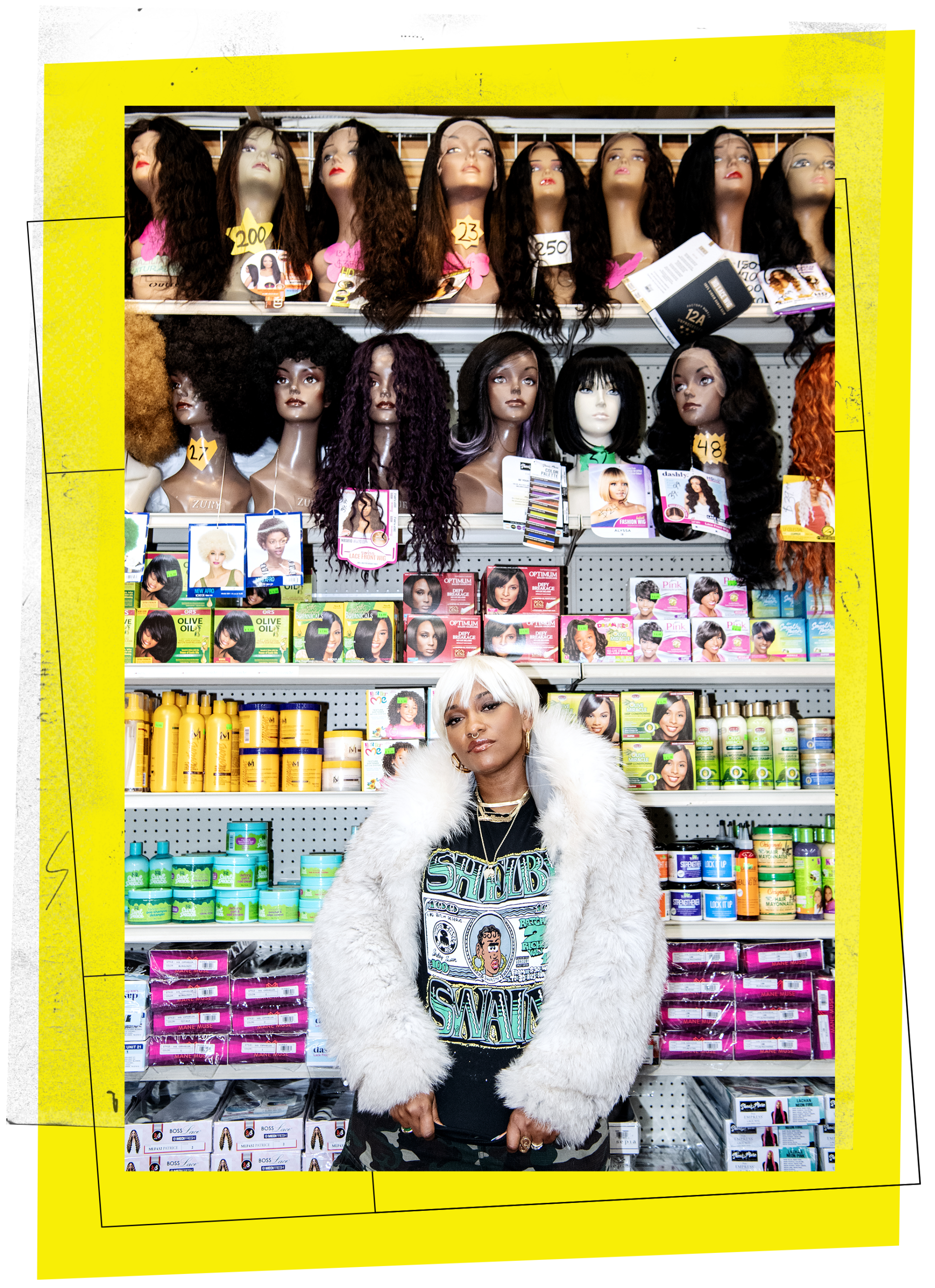
SS: My work is a unique ghetto creation.
DSH: I was going to say ratchet — which I don’t associate with negativity. We are past that.
SS: Ratchetivity, or sophisti-ratchet at its finest. You know what I’m saying? Honestly, this is where the creative process comes from. This is what people always kind of wanted to see. I feel it’s fly-fun. And you’re very just daring, in the sense that because we can go there, I can take it there.
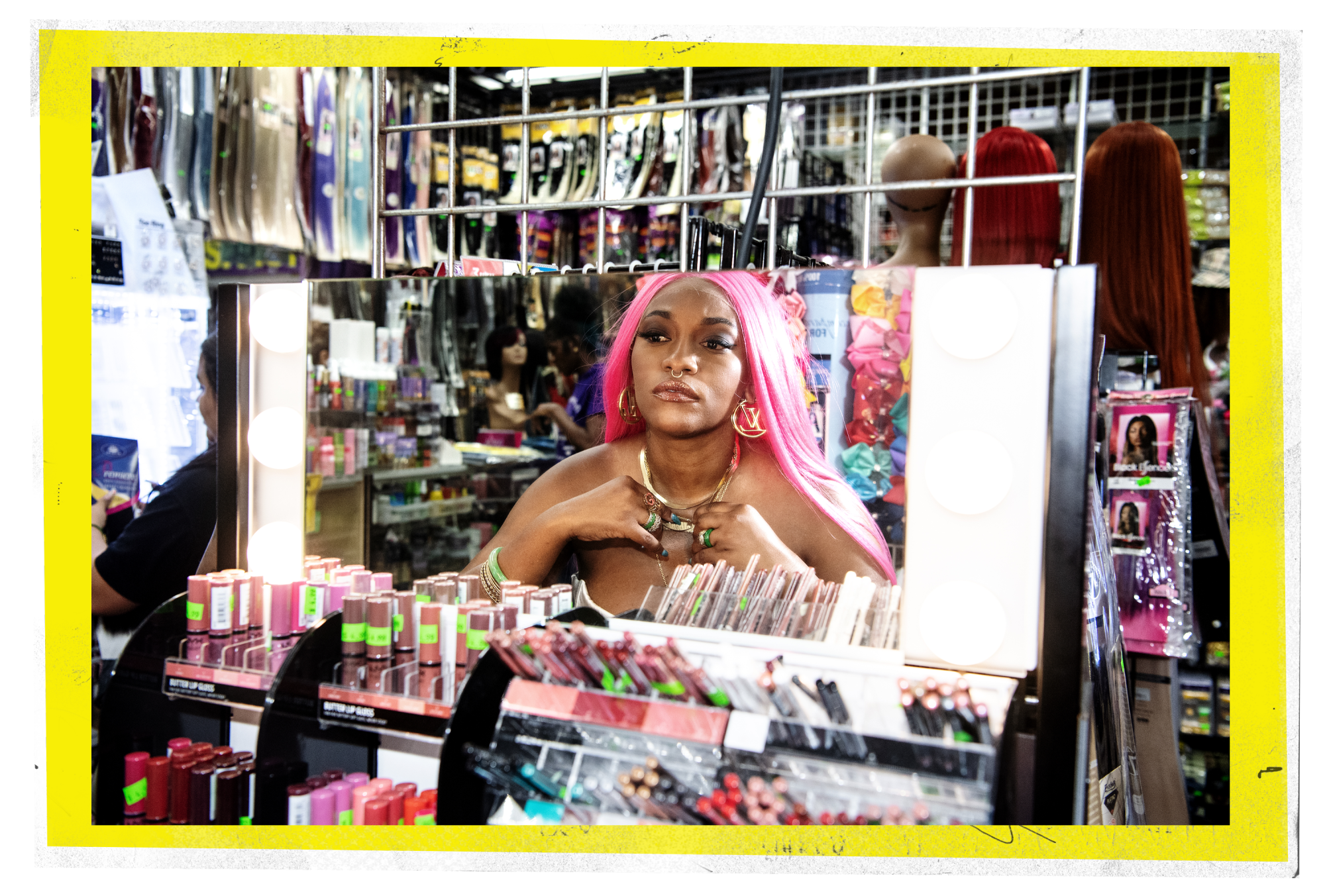
DSH: You briefly went to college for psychology. Do you see the psychology of beauty?
SS: It’s interesting because beauty unlocks. Beauty can unlock anything in a person. I’ve helped people go through divorces at a young age. Breakups, cheating, people finding themselves again after being torn down by somebody. Helping them through deaths. Beauty unlocks so much of the mind. Somebody can come in crying, I give them a hairstyle, they’re a whole new person.
Psychology has totally taught me that sometimes I might not be the best listener, and I’m working on that. But I think being a really good listener, and really hearing out everything that they have to say, understanding where they’re coming from — I have a better understanding of how people move because of the classes that I’ve taken. “Ah, OK, so I need to say this.” It helps. It helps so much.
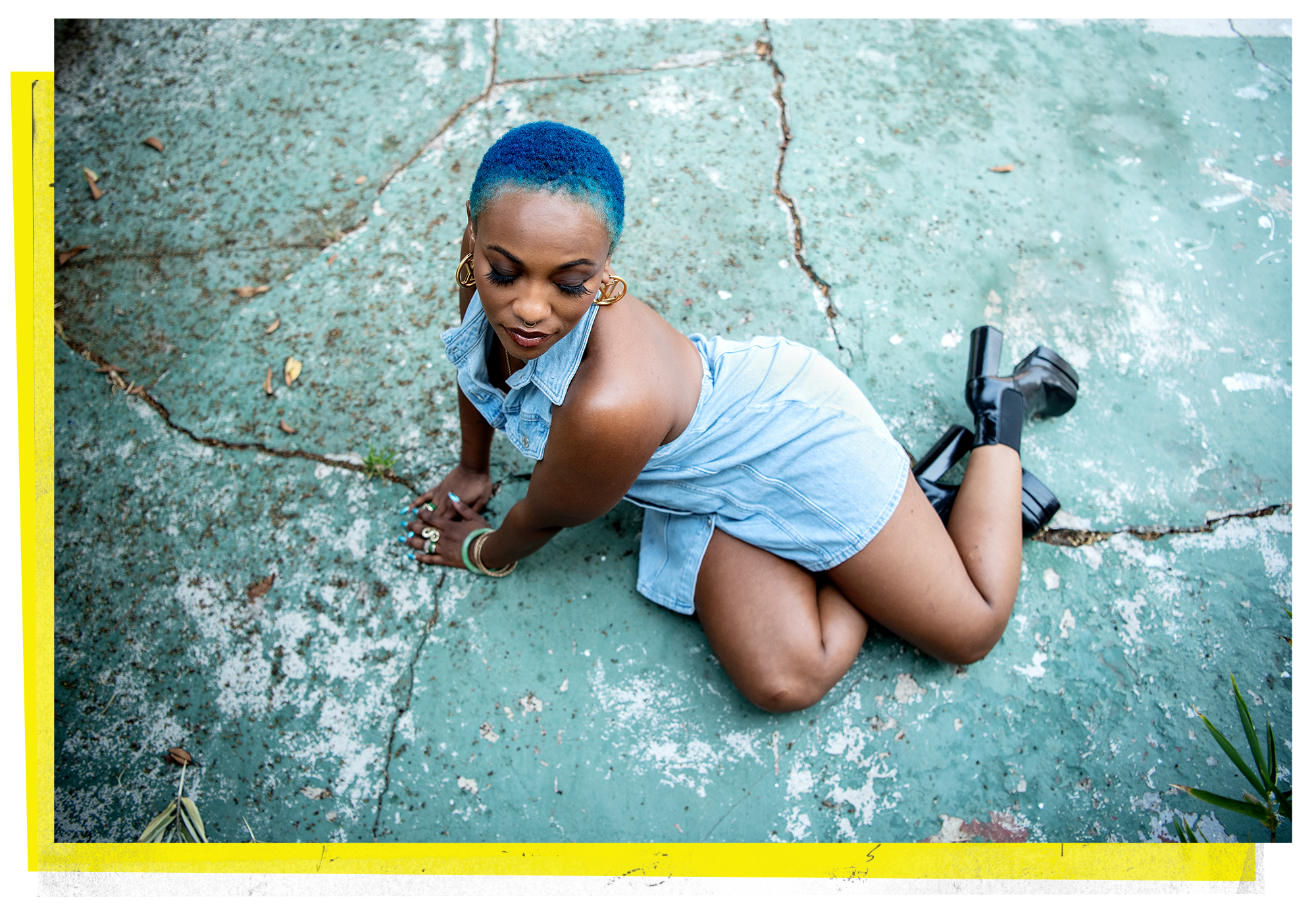
DSH: People always say that when you cut your hair short, you become really confident. I would argue that you already have to have a certain level of confidence before cutting your hair. Why’d you decide to cut your hair?
SS: This is my first time. I cut my hair on purpose, and it’s very liberating. At first, it took me down a dark hole real quick. It’s weird because I’ve never thought cutting my hair off would open up so many emotions that I thought I got rid of, but I didn’t. There’s a moment I didn’t feel cute. I’m not gon’ hold you. One day I caught myself tryna put my hair in a ponytail and I was like … [purses lips and nods] “OK, that’s cool.” Now that I see my hair growing, and I see how it’s looking and I see the texture coming in, I actually appreciate it. I love it. It’s now a growing journey that I didn’t know I needed.
Photography by Mariah Tauger Los Angeles Times
Location: Slauson Super Mall, Hi Sense Beauty Supply
MUA: Justin Weekes Plowden
Stylist: Christine Danielle Broussard
Orange outfit: Versace; jean dress: Zara, T-shirt: RAC (Raggedy Ass Clothing); additional clothing from Slauson Super Mall
Chapter II

In this town, beauty and labor are inextricably linked. To better understand the mechanisms that make Hollywood sparkle, we asked members of the Local 706, the make up artists and hair stylists union under the umbrella of the International Alliance of Theatrical Stage Employees, to give us a glimpse in to a day of their working lives on sets, in studios and abroad.
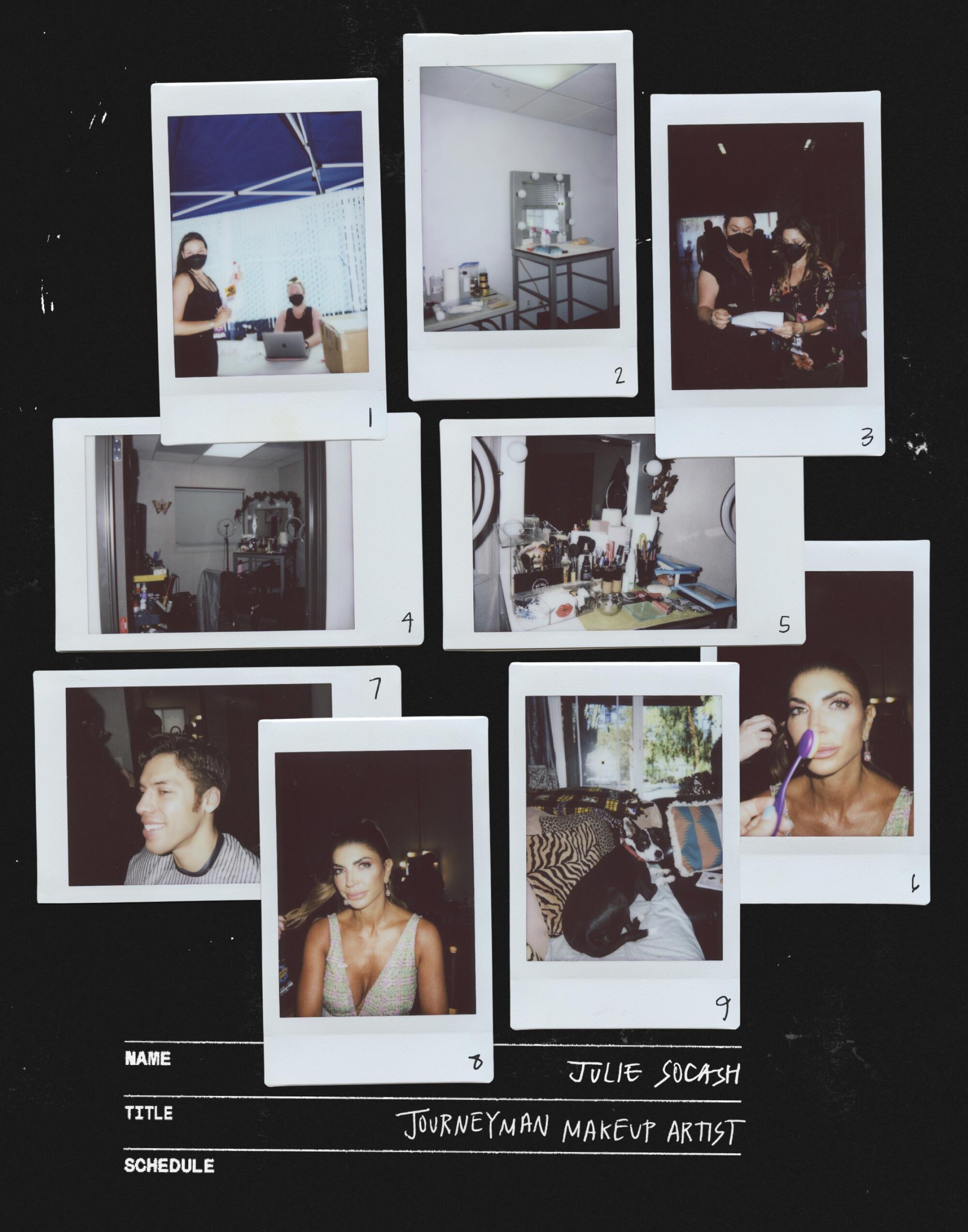
1. Have to check in, get mask and take COVID test before work.
2. Setting up specialty makeup station at 6:30 a.m.
3. My boss, Zena Green (right, in flower [shirt]), and I going over the schedule.
4. My workspace. Going in.
5. Some of the many, many products [I’m] using.
6. Finishing up one of my dancers who will perform.
7. Joseph [is] finishing up in the room.
8. She is all ready to go.
9. My dog Sage hanging out next to me while I do my union Zoom meetings.
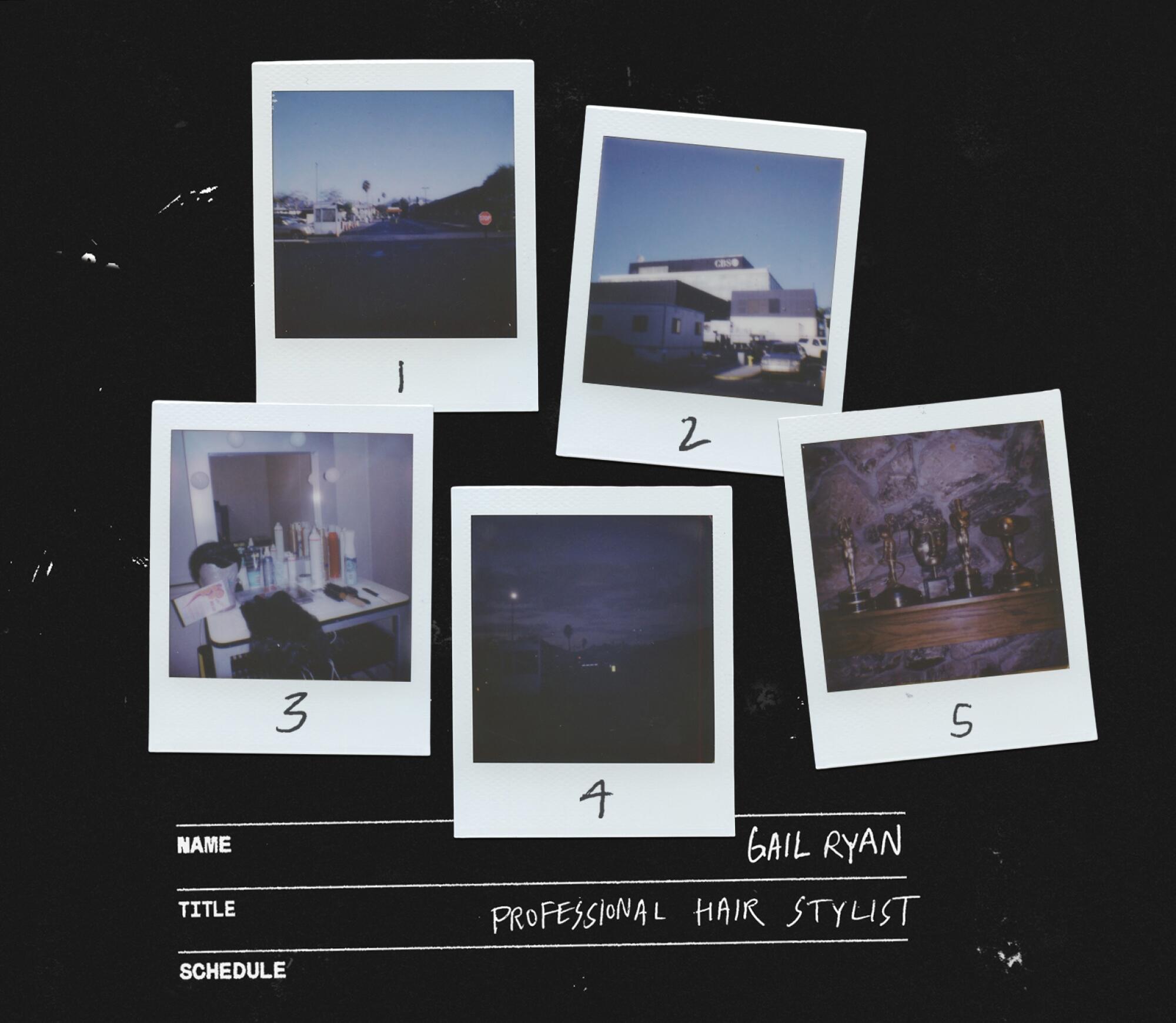
1. Arriving at work — 7 a.m.
2. At work.
3. My station at work.
4. Leaving work at 7:30 p.m.
5. My inspiration to go to work.
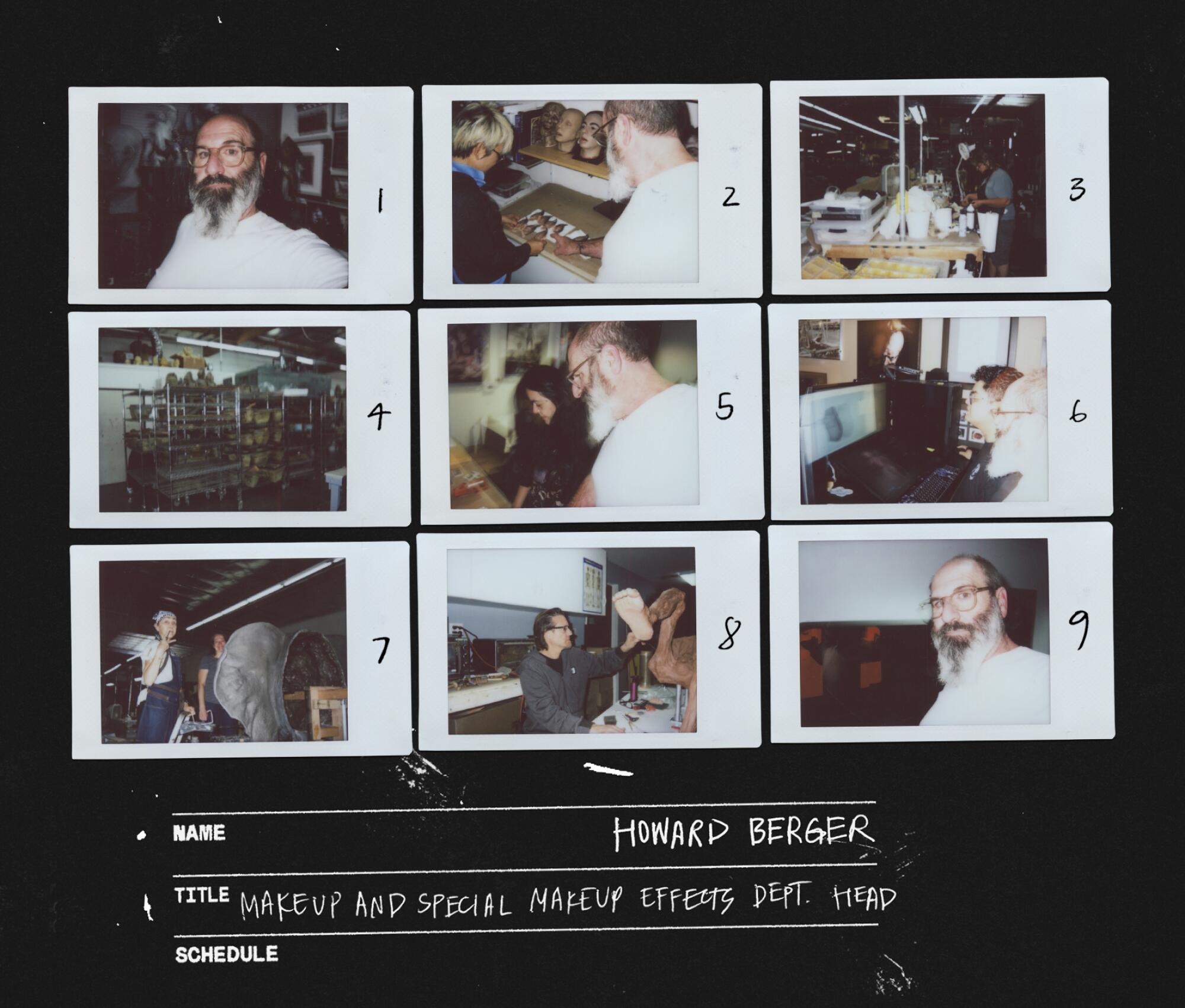
1. 5:30 a.m. Arrived at KNB EFX GROUP in Chatsworth ready for work.
2. Working with hair [department] supervisor Kanh Tran — reviewing hair on creature ears.
3. Checking with Val Crawford as she begins the fur process on animal replicas for the film.
4. Molds of sculptures to run foam latex prosthetics out of. At KNB there are thousands of molds from all different films and shows the company has contributed to.
5. Working with executive assistant Regina Castruita going through bids and contracts for upcoming projects.
6. Working with digital artist Andrew Herrera on a new asset.
7. Deborah Galvez and Kathy Sully readying and gluing ears to a new creature at the shop.
8. Sculptor Jaremy Aiello working on a new body sculpture.
9. 4 p.m., time to check the digital printers and head on home.
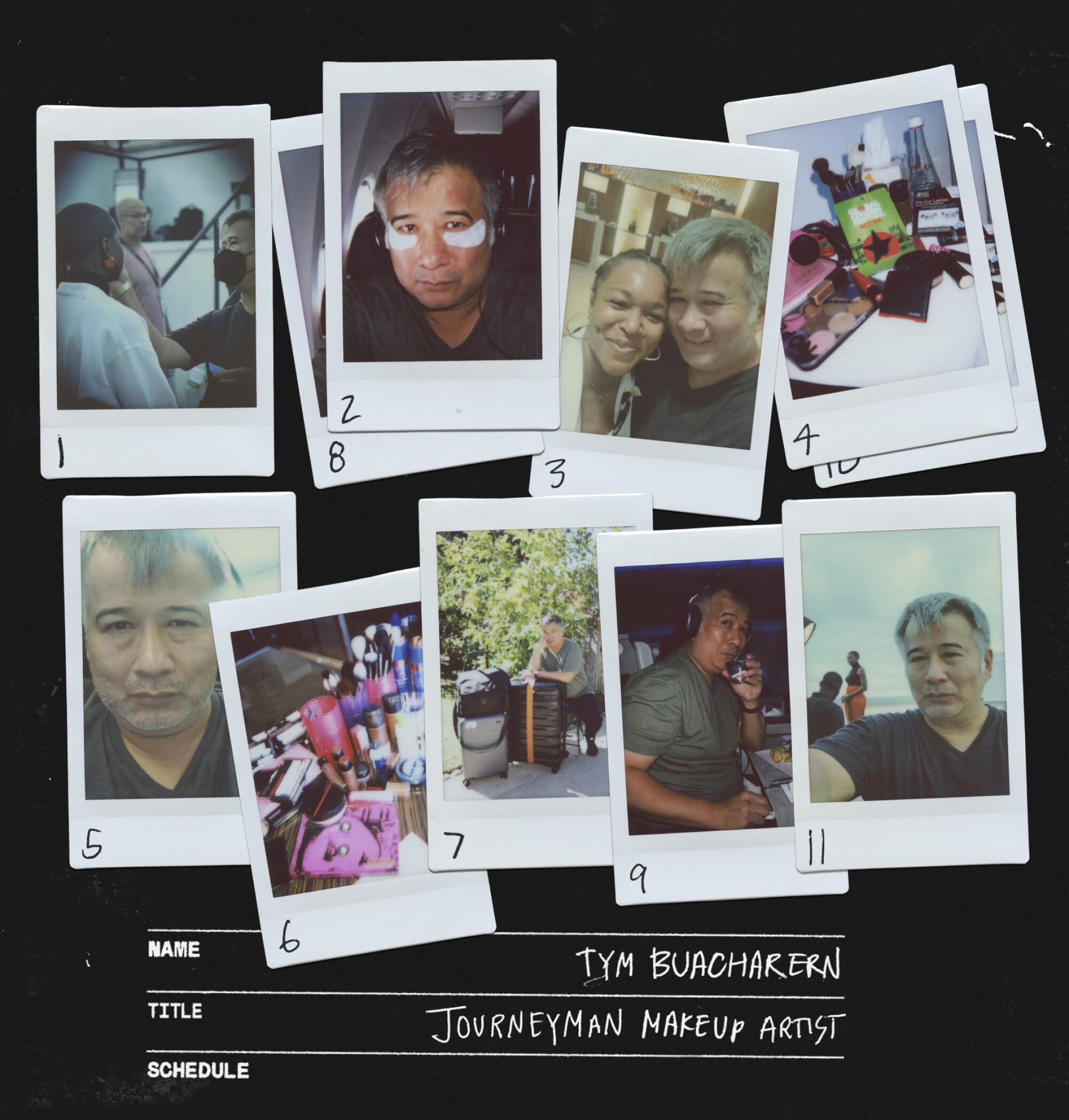
1. Touching up Danai Gurira on top of Black Star Square Monument for Global Citizen Concert in Accra, Ghana.
2. and 8. On second flight to Ghana after a 14-hour flight already. Sometimes even a makeup artist needs some help. Me with my Talika eye patch.
3. Ran into another Local 706 makeup artist, Cole Patterson, at the Kempinski Hotel in Accra. She was there to groom Usher.
4. and 10. Touch-up station in Danai’s dressing room for Global Citizen Concert.
5. On a flight back to the U.S. after Global Citizen Concert and “Good Morning America” special in Ghana. Needed more eye patches, actually could use a full-face hydrating mask.
6. Makeup setup in the hotel room. I really need to learn to condense my kit.
7. Waiting for the car to go to LAX. Already tired just thinking about over 20 hours of traveling.
9. Enjoying some food and beverages on the flight to Accra, Ghana.
11. Love seeing Danai in action.
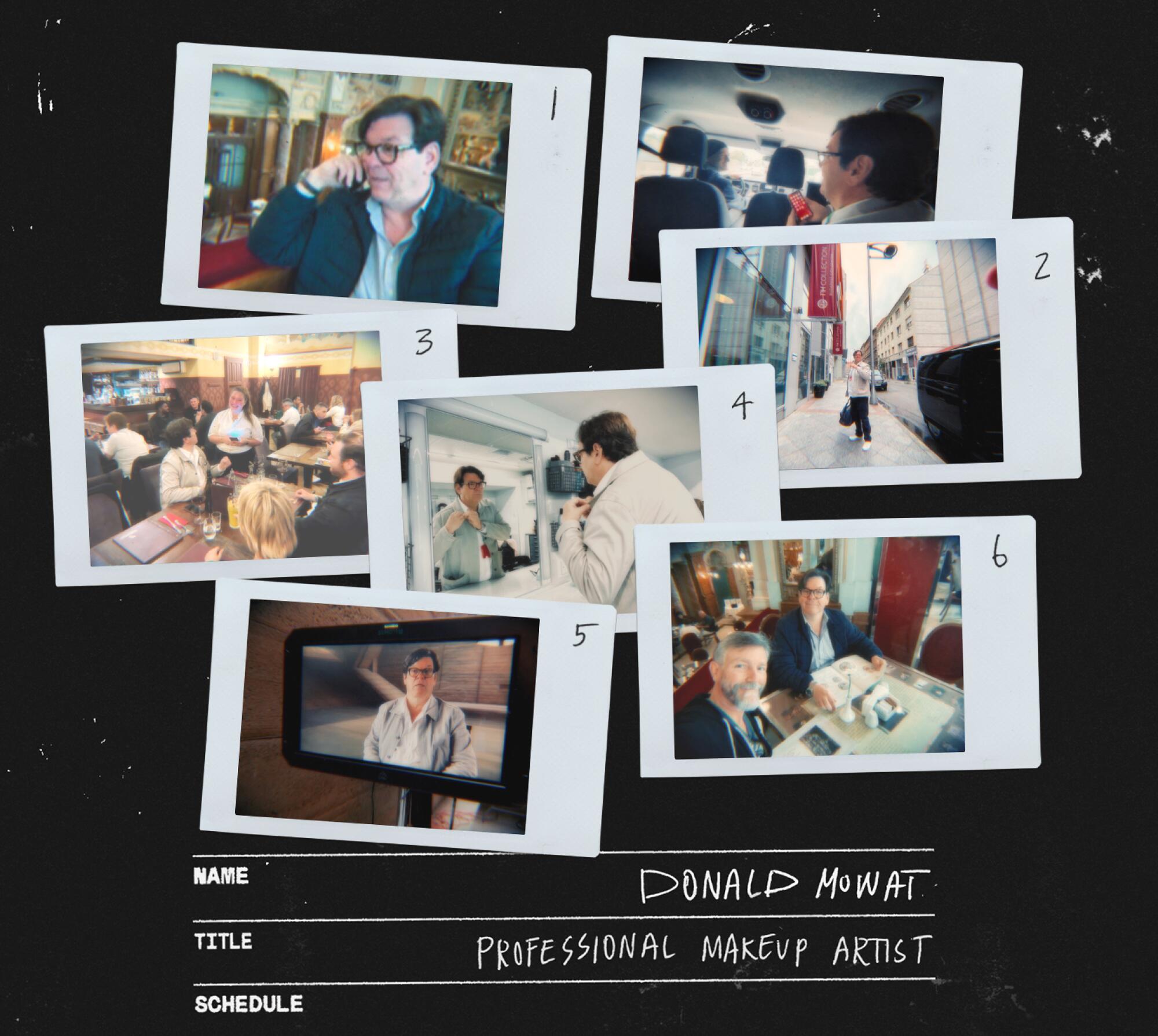
1. Sunday 10 a.m. working breakfast at the iconic landmark New York Cafe [in Budapest]. Even after a sixth day, I’m still working on the phone on Sunday (my only day off), rescheduling times for my hardworking crew, finding wig and beard doubles for actors of “Dune: Part 2.”
2. Set wrapped early! Well, sort of, only a 10-hour day door to door. Arriving back at my Budapest home away from home, the Hotel NH.
3. Saturday evening dinner at Indigo, an Indian restaurant and one of my favorite restaurants in the city.
4. Last looks on me before I head to EPK.
5. Just so timed out that at the end of a sixth day there was time to fit me in for an Electronic Press Kit (EPK). Here I am onscreen. A chance to discuss some of work the hair, makeup and prosthetics team do to help bring this film to the big screen.
6. Finally Garry and I get to spend time together and forget about work and plan the rest of our day. 11 a.m. at the famous landmark New York Cafe [in Budapest], one last work call getting wig and makeup stunt doubles and crew lined up, then a free day with Garry, a.k.a. mental health Sunday.
More stories from Elevation
Jason Parham revisits the Smokey Robinson of hip-hop, Nate Dogg
Rikkí Wright unpacks the beauty routine as a metaphor
Rembert Browne comes of age without a hairline
Devan Díaz takes on tweezing as self-care in our warped times
Dave Schilling investigates why the mullet is the haircut that refuses to die
Chapter III
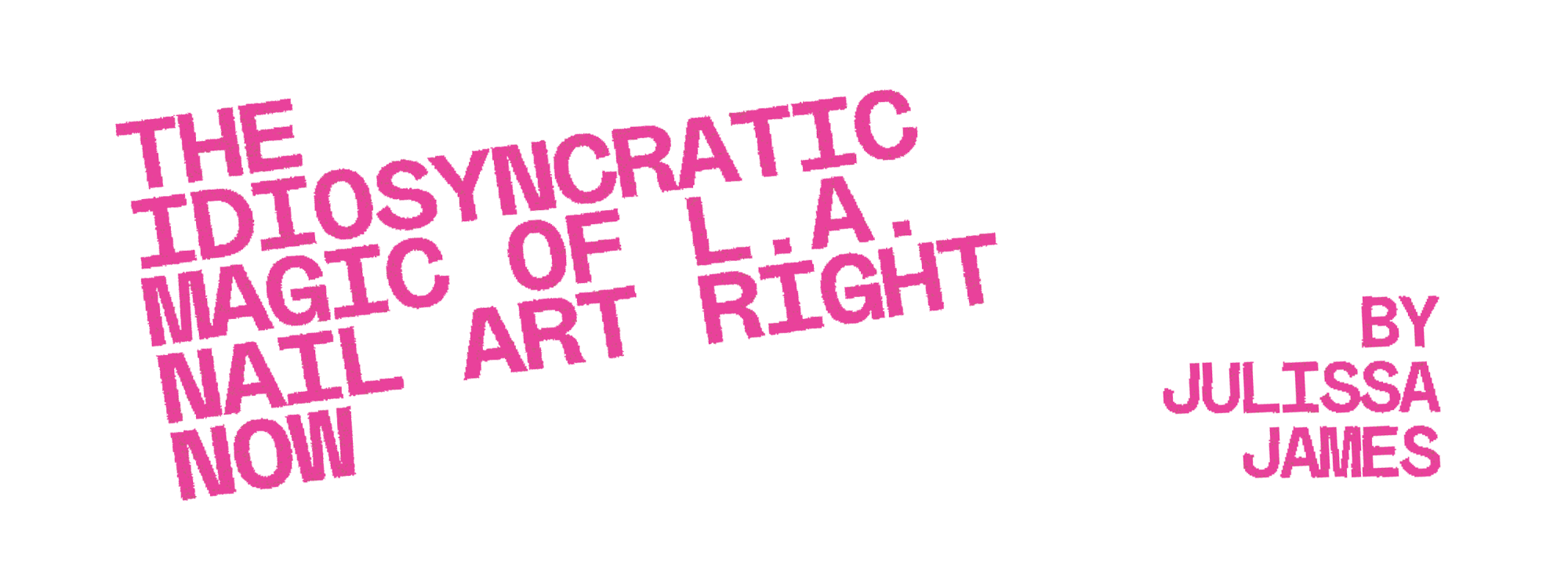
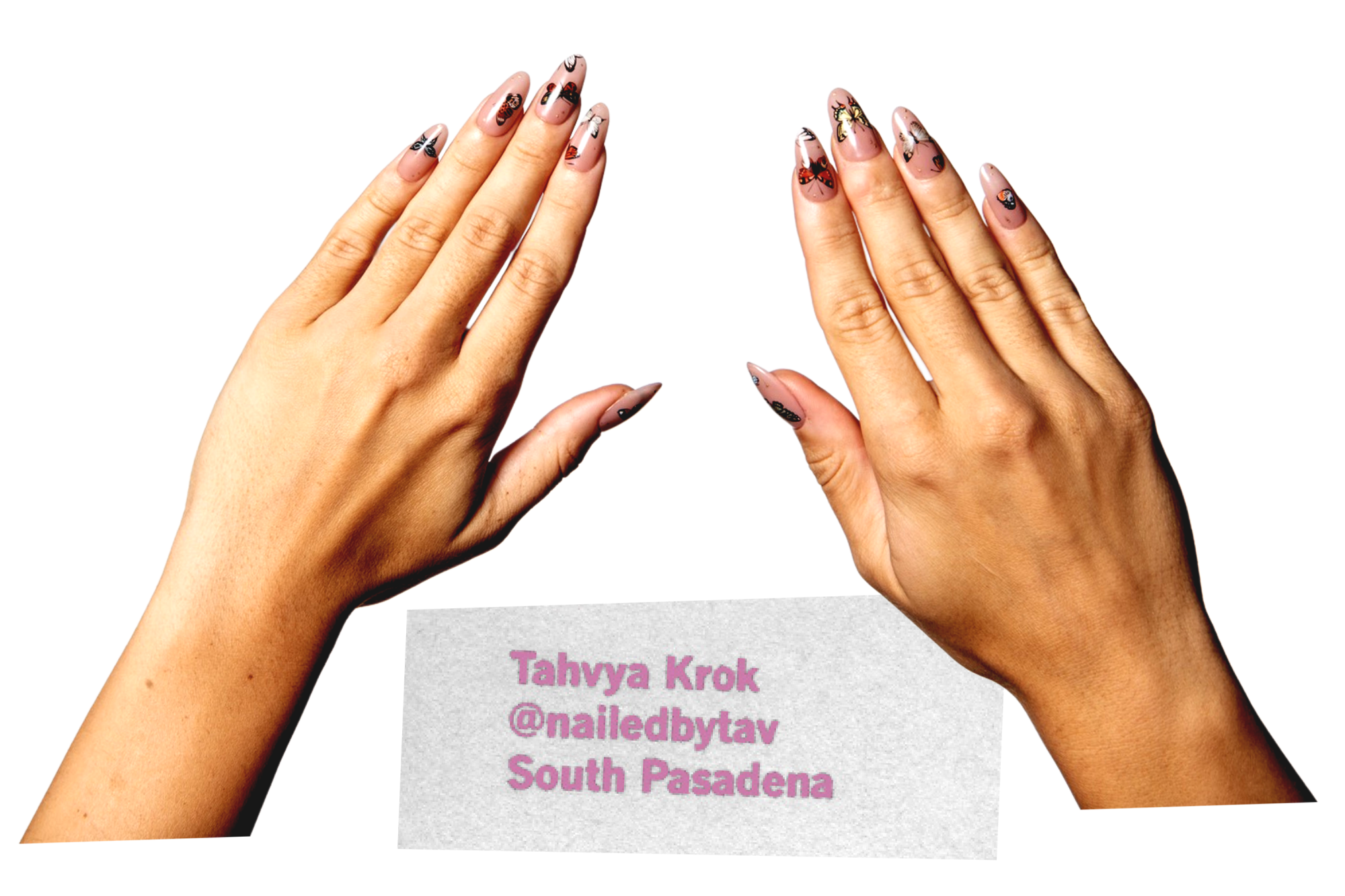
I do nails because: It makes me feel fulfilled. I look forward to seeing my clients every month and experimenting with challenging designs. I’m very particular and methodical in my practice. It makes me happy to know I provide my clients with quality service they can trust.
I would describe my nail style/form as: Intricate and precise. It’s difficult to achieve smooth line work on such a small canvas. With every set I try my best to make my work as clean as possible to set my work apart. I always strive to improve.
As a nail artist, I’m more than just a nail artist. I’m also a: Friend and unbiased listener. My goal is to make my clients feel safe and relaxed when they enter my space. I work with many different people and whether they unwind by sharing juicy gossip, watching their favorite show or enjoying a serene environment, I’m happy to adjust to their energy. It’s my job to curate a custom experience for all my clients, including great nails and great vibes.
The unlikely thing inspiring my nail art right now: [It] stems from my personal interests. Finding the right inspiration can be difficult at times, because although it may be beautiful and inspiring, it may not translate well to nails. Large art pieces that can be dissected and spread across all 10 nails, or patterns are great for creating a cohesive set. I also draw inspiration from my hobbies and often pitch freestyle designs to clients. Some examples include visiting botanical gardens and watching my favorite movies.
The stream of thoughts that goes through my head when doing someone’s nails looks like: [It] resembles a long to-do list. Before starting any set, I evaluate my canvas and create a mental list. Every design is like a sandwich: Each layer requires the proper foundation before the next. I work expeditiously through the layers, all the while interacting with clients. Multitasking is a necessary skill as a nail artist. I take great care to be present and complete each nail flawlessly. I focus on my breathing to stay still and, occasionally, I think about what I’ll eat for dinner [laughs].
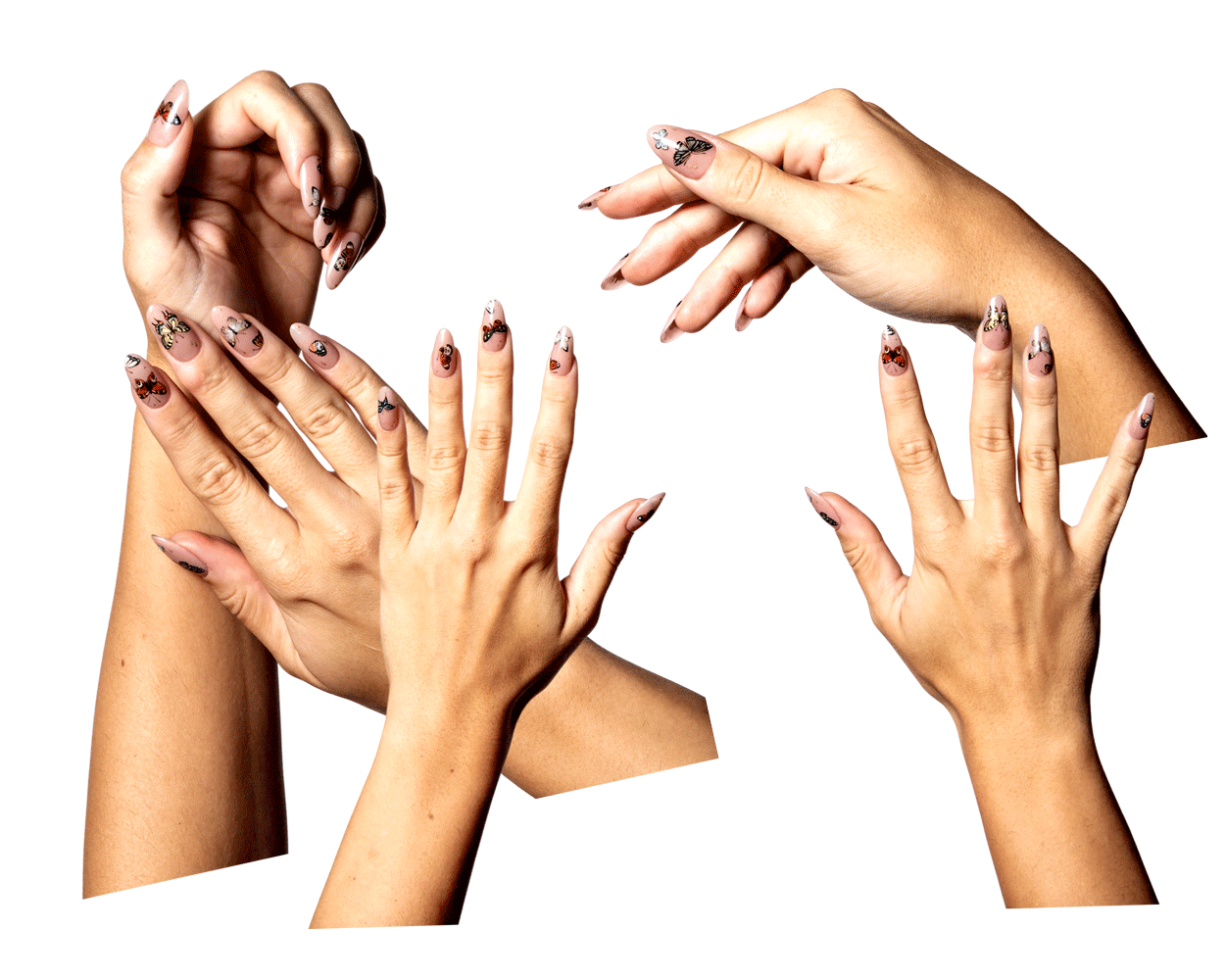
Another L.A artist whose work I love: Lila Robles, aka @nailjerks. There are several L.A.-based nail artists who do phenomenal work, but what sets Lila apart is her original airbrush style and designs. She has been a trailblazer influencing the nail game.
The thing I wish people knew about my job: It took a lot of practice and patience to get here. Until recently, nail artists have been unappreciated, and even condemned, because our work is viewed as a menial part of the beauty industry. Because nails are physically small, they are overlooked as a medium for true art. The time has come for everyone to embrace nail artists under the beauty umbrella.
The thing I love most about my job: The ability to let creativity flow. Of all the jobs I’ve had in my life, I’m lucky to have found my passion. To face a challenge and execute it provides a feeling that’s unmatched. Traditional artists house their work on walls; my art moves — literally and figuratively.
My green flags in a client: Respect, humility and generosity. I can always tell when someone is genuine. I don’t expect my clients to always be in a perfect mood. In fact, I hope I can brighten their day with a therapy sesh and fresh set. I mean, Elle Woods taught us best in “Legally Blonde”: “Where do you go when you’re feeling down? Your nail tech, of course!”
My red flags in a client: Entitlement, unrealistic expectations and consistent cancellations or reschedules. What’s interesting about being a nail artist in the capital city of influencers and celebrities is that you’re met with a lot of entitlement. I have a zero tolerance policy in that regard, which I have made clear on my platform. I don’t harp on mild tardiness or tips, as long as I know the person I’ll hold hands with for the next several hours respects me as a person and an artist.
The moment I realized doing nails was a form of artistry: When I perfected techniques that help me achieve the look of each set. Every artist has a unique skill set and subtle nuances that make their art identifiable. Nail art requires focus, precision, versatility, manual dexterity and knowledge of chemicals, anatomy and color theory. The pioneers of nail art have paved the way for this renaissance, and I’m honored to be a part of it.
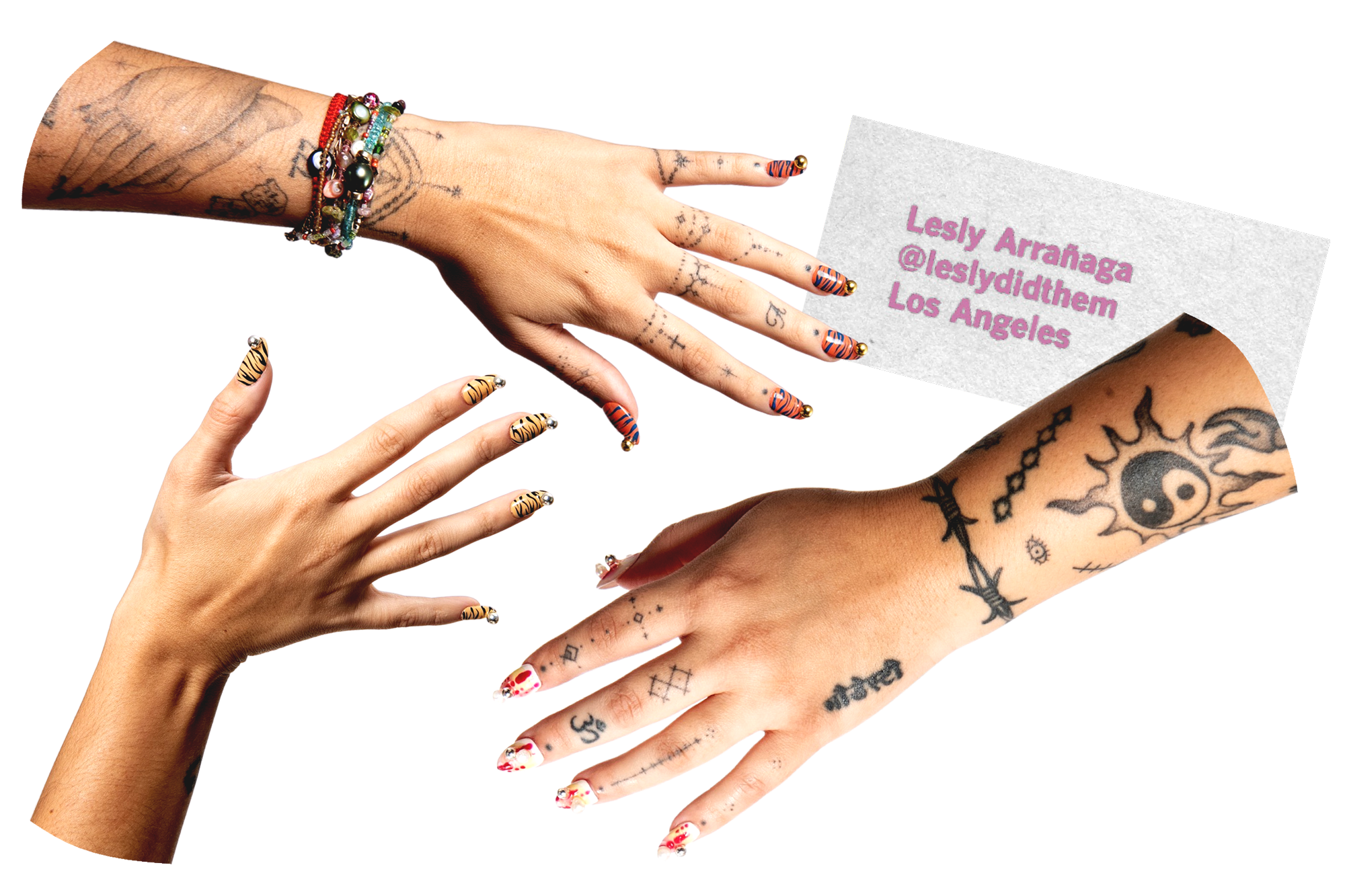
I do nails because: I like creating a safe place for me and my clients. It’s my form of therapy. I started doing nails in the beginning of the pandemic. My anxiety was bad, so I started doing my nails and realized that [it] was therapeutic, so I just ran with it. It’s really rewarding, and I’m excited to see where it goes.
I would describe my nail style/form as: A little bit of this and a little bit of that. I like finding inspiration in everything around me. My phone is full of photos I plan on using as inspiration.
As a nail artist, I’m more than just a nail artist. I’m also: A friend, confidant, comedian and therapist.
The unlikely thing inspiring my nail art right now is: Food, olive oil specifically. Whenever I’m cooking and I use oil, I like taking photos of the different patterns that come out.
The stream of thoughts that goes through my head when doing someone’s nails looks like: Oh man. If my client is quiet, I’m always thinking about what could be going through their head. Do they like their nails? Do they think it’s awkward that it’s silent? I overthink. If it’s a regular, then I just go into a state of flow and I’m present and not really in my head — unless we are talking about something crazy. Then I’m usually like, “Damn, that’s wild.”
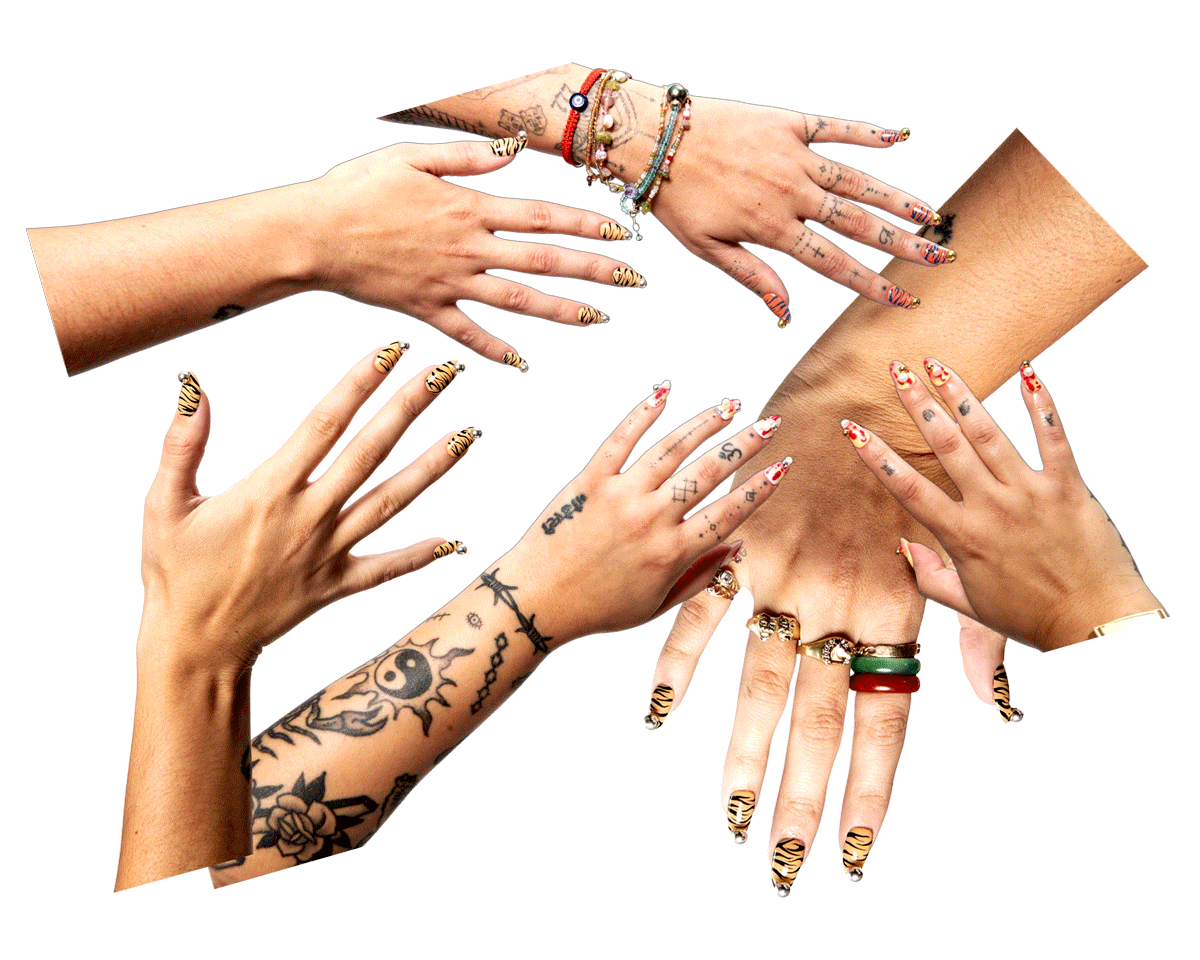
Another L.A. nail artist whose work I love: That’s tough, there are so many amazing artists! But @nailjerks and @nailedbytav are my top picks!
The thing I wish people knew about my job: There are so many steps that go into doing nails. It’s not easy — you have to be meticulous.
The thing I love most about my job: Besides the fact that I get to create art every day, I really love the relationships I’ve created with my clients-turned-friends.
My green flags in a client: When they know what they want, aren’t constantly on their phone, sit properly, trust the process, are respectful, and understand that you are human too!
My red flags in a client: Late to their appointment, rush you, keep going back and forth on what they want, aren’t respectful of your time.
The moment I realized doing nails was a form of artistry: When I started seeing nail artists paint very detailed art that almost looks like a sticker from how good it is. And 3-D-sculpted nails are also insane! It’s wild how nails nowadays can have height too, not just length.
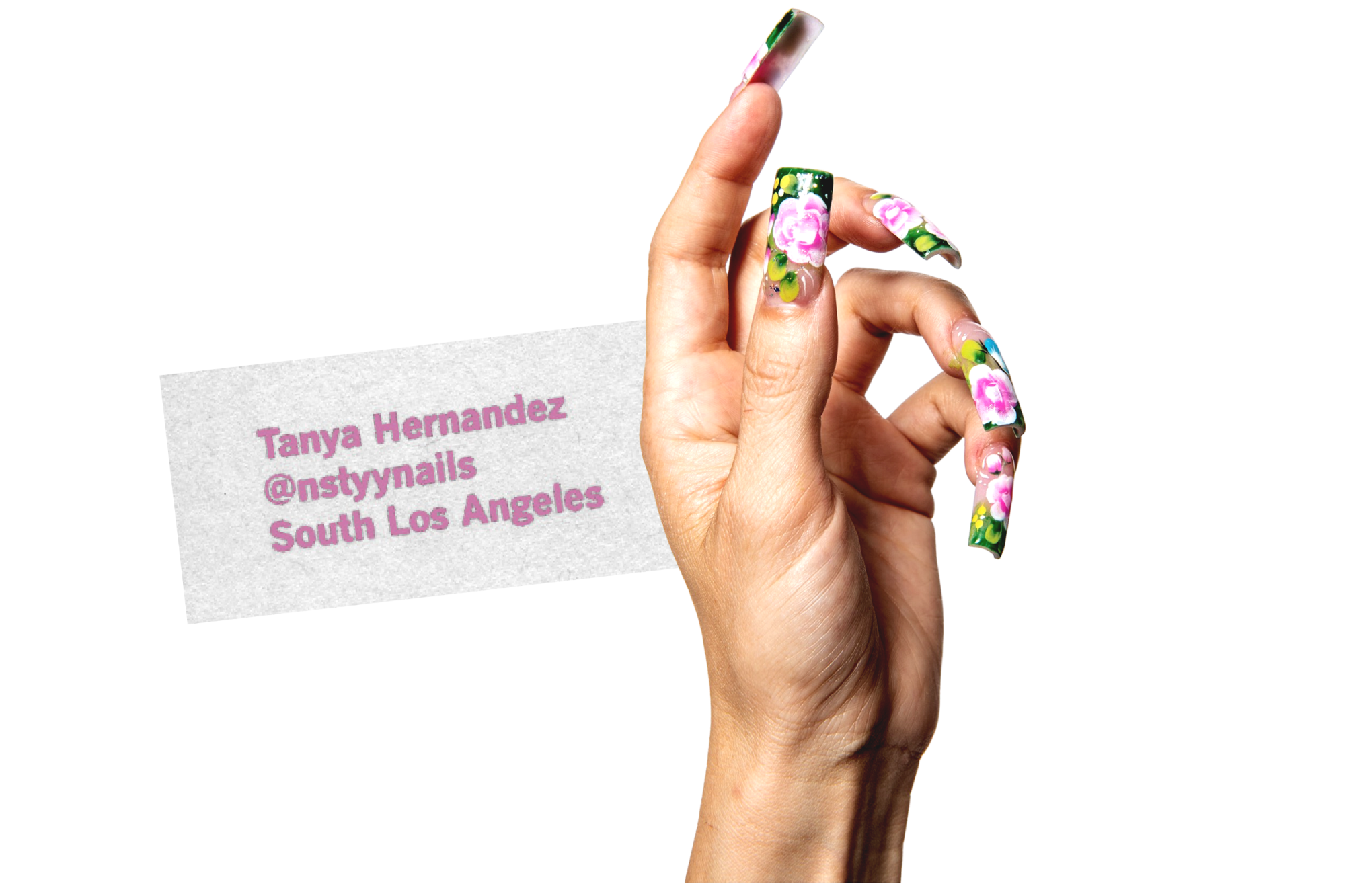
I do nails because: I wanted to see and do something different.
I would describe my nail style/form as: A collection of my thoughts.
As a nail artist, I’m more than just a nail artist. I’m also: A human being doing life like everyone else.
The unlikely thing inspiring my nail art right now is: Old films and music videos, and other artists.
The stream of thoughts that goes through my head when doing someone’s nails looks like: A combination of so many little things: Is the shape perfect? How can I make this look unique? Do I like how this looks? Is this what my client envisioned?
Another L.A. nail artist whose work I love: @mija_nailz, who I’m lucky enough to share a space with.
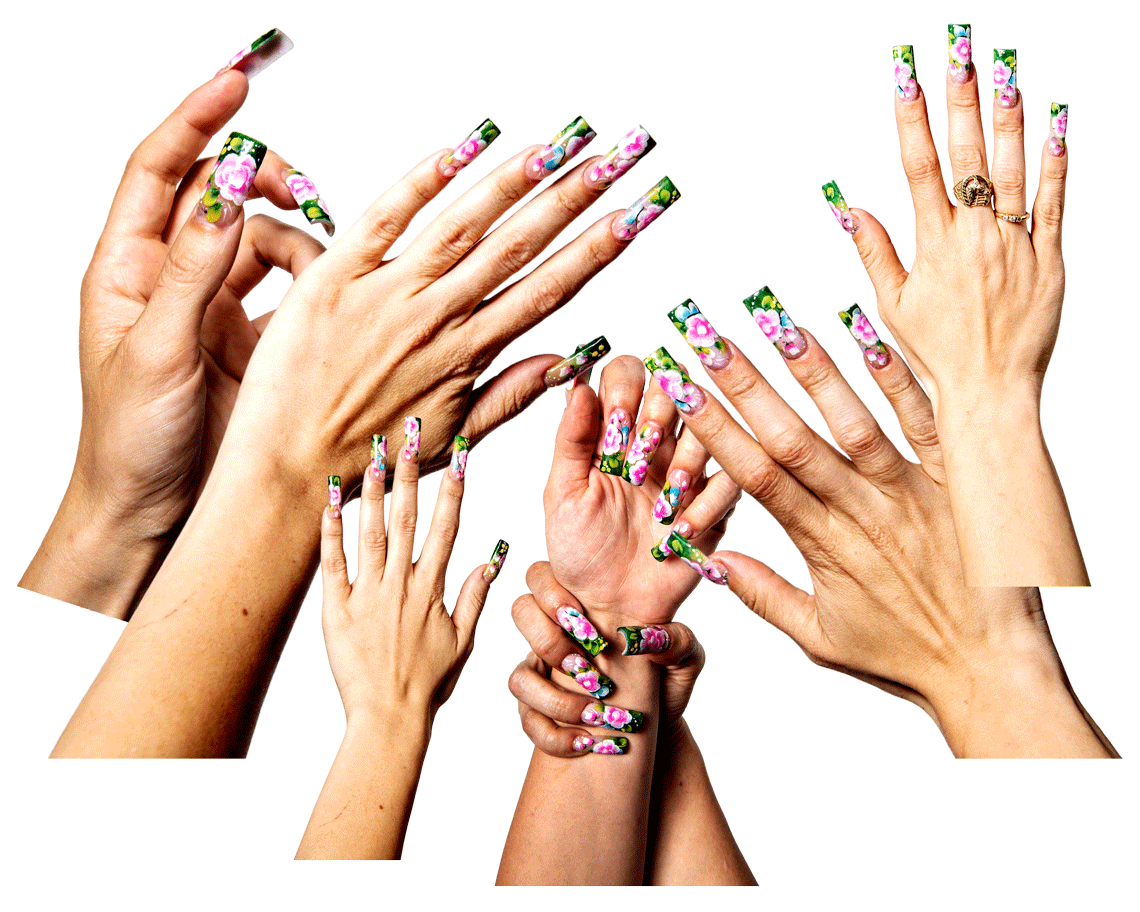
The thing I wish people knew about my job: It doesn’t feel like a job but more like an expression. I’m just lucky enough to get paid to do it.
The thing I love most about my job: Being able to create on people who embrace my art as much as I do.
My green flags in a client: A client who is respectful of my time and comes in with good energy.
My red flags in a client: The “How much are these?” with no other context client.
The moment I realized doing nails was a form of artistry: When I first stumbled upon @krocain and went down a rabbit hole of all things nails.
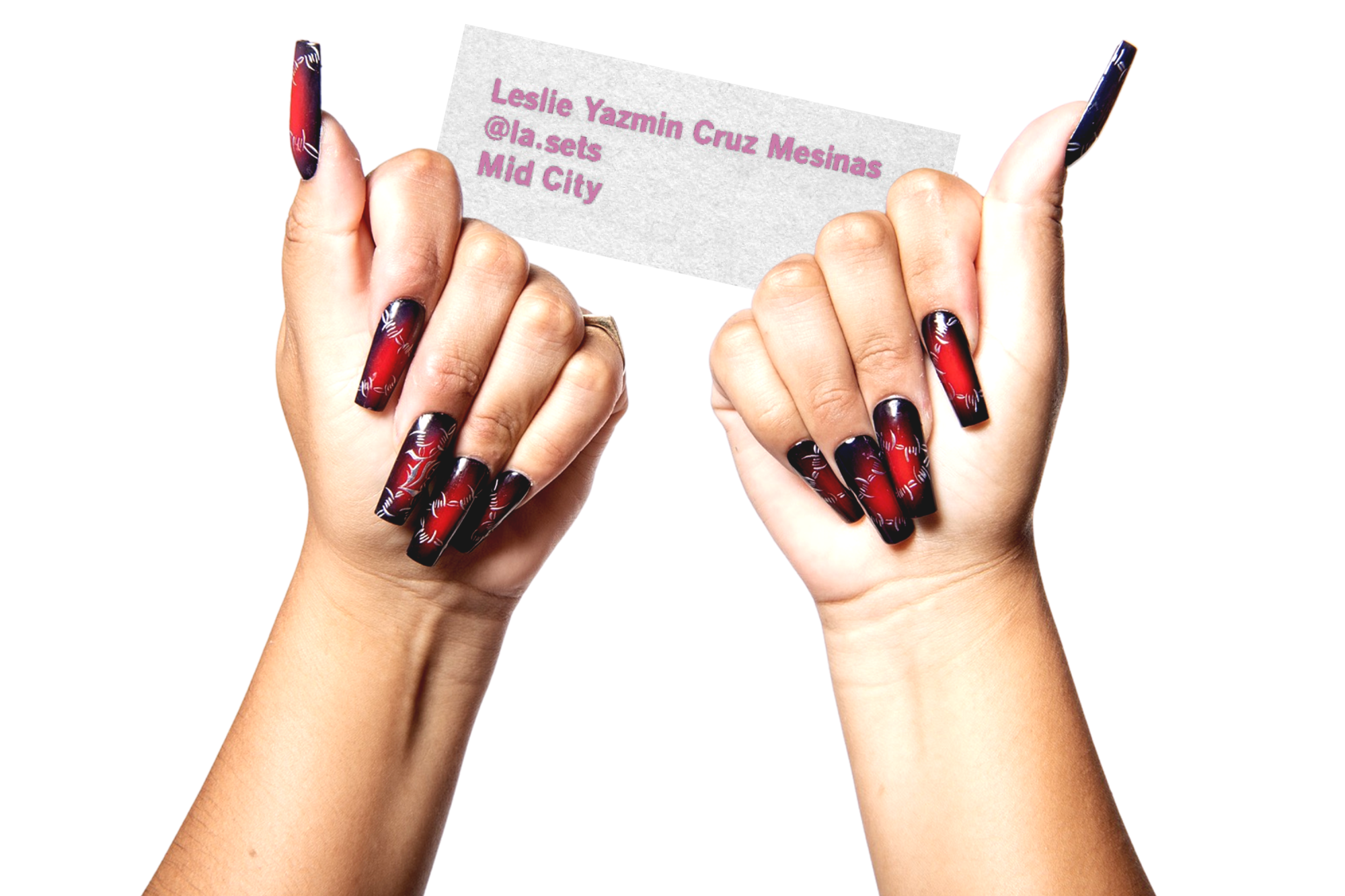
I do nails because: Being undocumented is what pushed me to start my own business. I was in my fourth year at Cal State L.A. when I began to realize how uncertain my career choices were after graduating because I was not even able to apply for a job. I started with eyelash extensions and it’s safe to say that wasn’t for me. After that, I started exploring nails and I quickly fell in love with it. I love the process and the creative freedom it comes with.
I would describe my nail style/form as: Fun and colorful hand-drawn designs.
As a nail artist, I’m more than just a nail artist. I’m also: A dog mom, an auntie, a resilient Oaxaqueña.
The unlikely thing inspiring my nail art right now is: Texture. I always love a good 3-D set.
The stream of thoughts that goes through my head when doing someone’s nails looks like: I hope they like it … Why are they so quiet? Do they not like them? Hold your breath, please don’t moveee. OK, I need to pick it up now — I have 15 minutes before my next client comes *starts panicking.* WOW … I did THATTT.
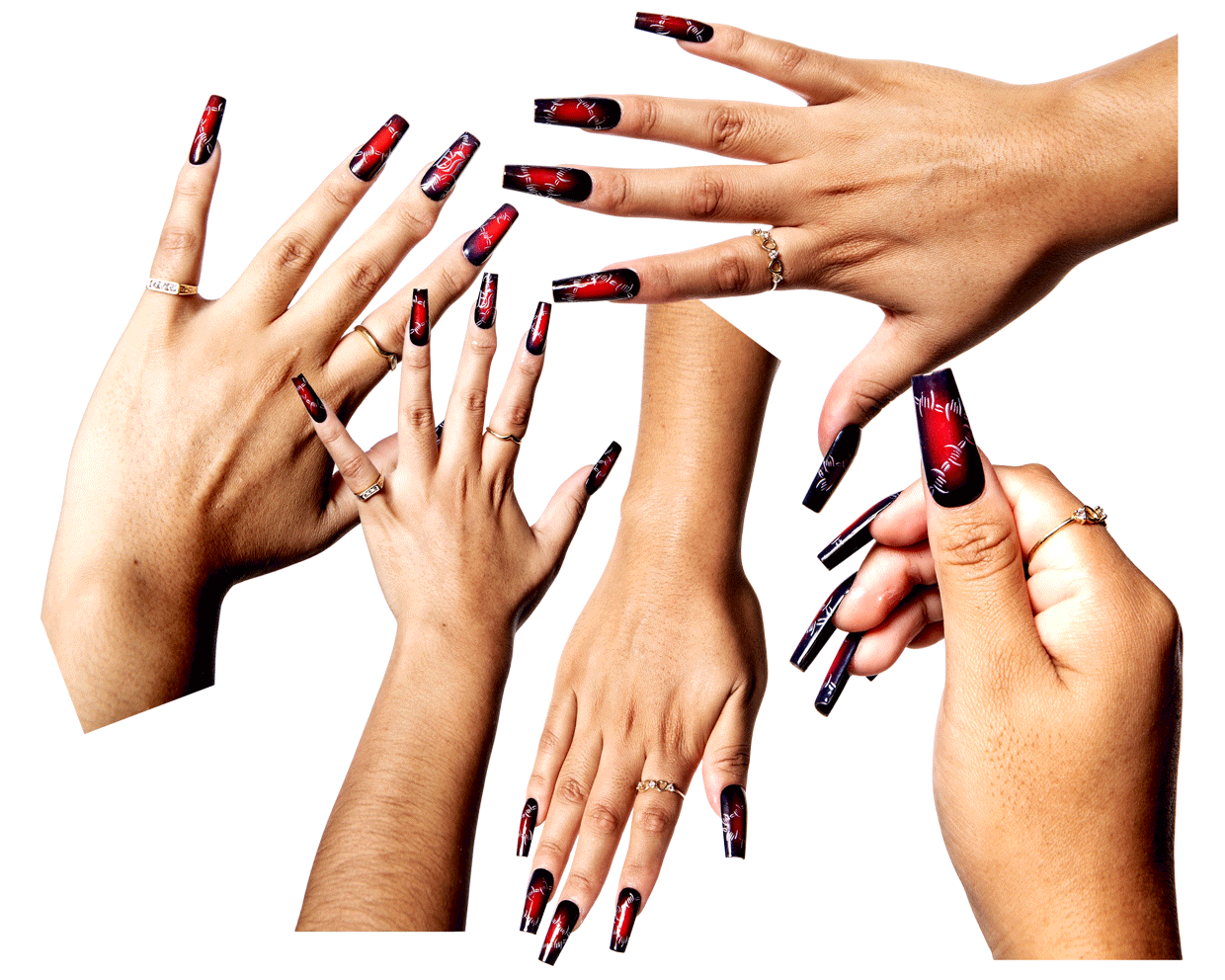
Another L.A. nail artist whose work I love: @setbyjas.
The thing I wish people knew about my job: It’s more than just the pretty results. There’s so much that goes into it. It takes a lot of patience and dedication.
The thing I love most about my job: Building one-on-one relationships with my clients. They are definitely more than clients; they’ve become my friends.
My green flags in a client: On time to their appointment. Takes care of their nails (not popping them off, doesn’t use them as a tool). Stays still most of the time. Tips are a plus.
My red flags in a client: Late to their appointment. Moves too much during their appointment. Leaves my message on seen. Cancels last-minute [or a] no show. Thinks they know the process of your job.
The moment I realized doing nails was a form of artistry: I grew up watching my dad make wood crafts. I was always amazed by the process, watching him turn a single piece of wood into a functioning house clock, a portrait or a boat in a bottle. My dad passed away in 2011. But ever since I started doing nails, every set has made me feel connected to my dad. It’s a reminder of the gift he left me with to create, and I realized that doing nails was no different than making wood crafts. You’re creating nothing into something. It’s such a unique process realizing that every set of nails is a tiny piece of art.
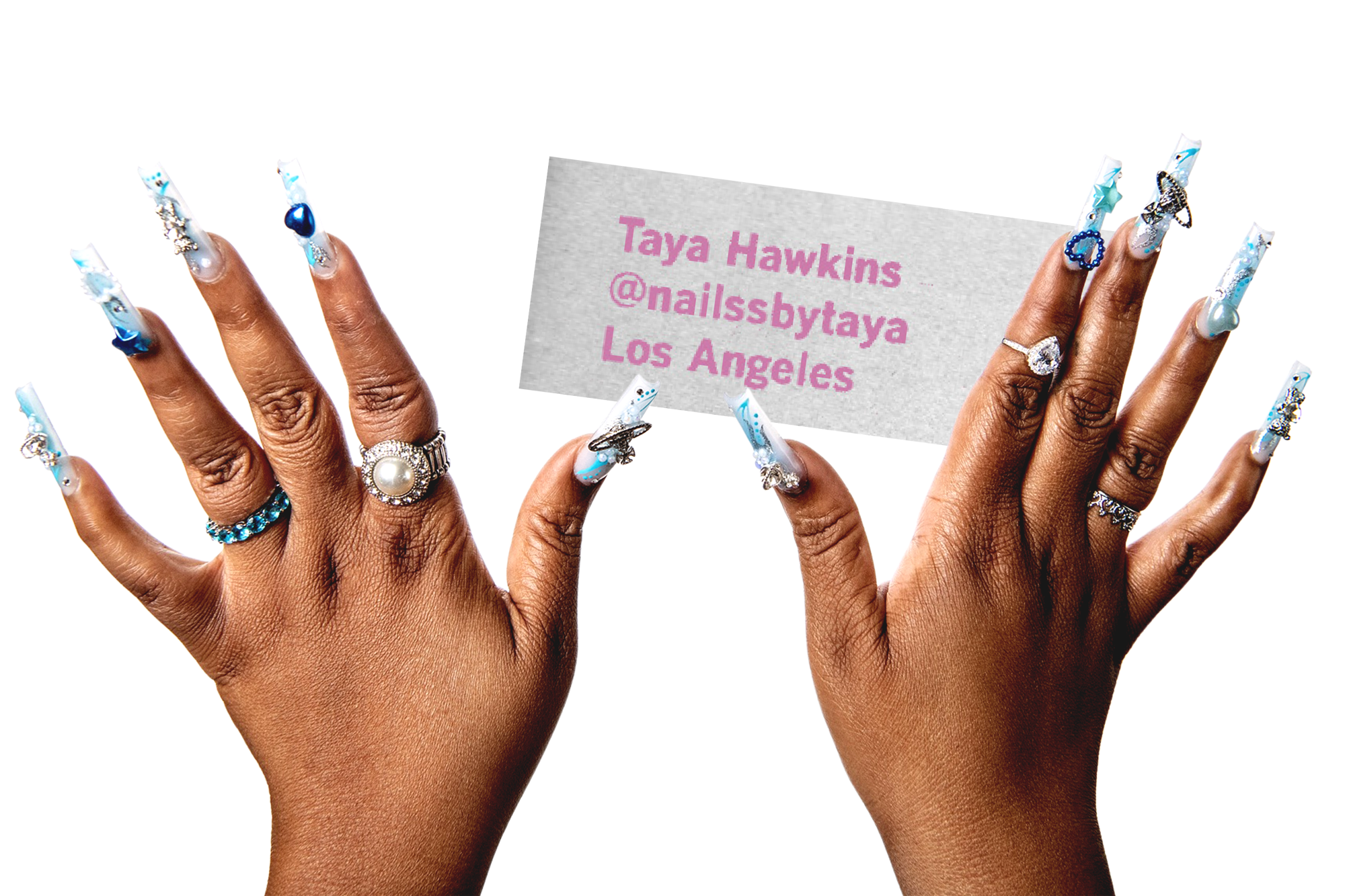
I do nails because: My drive is my creativity. I have a lot of ideas.
I would describe my nail style/form as: A lot of people say they know it’s my nails when they see the way I shaped them. Then, my rhinestone placement, because I love bling. My style varies, but it’s very showy. Like, you have to see this.
As a nail artist, I’m more than just a nail artist. I’m also a: Friend. I’m like family. I’m a therapist, someone you can lean on. I’m not here to do your nails and only your nails. I’m here to listen and hear how stressed you are. Because I understand and I will do the same thing.
The unlikely thing inspiring my nail art right now is: Say you give me a color — I get a vibe off of just a color. I go by like my clients’ vibe as well. I know what kind of vibe they’re looking for. I know what will look nice on them.
The stream of thoughts that goes through my head when doing someone’s nails looks like: I spark up conversations that I know will catch their attention. For instance, anything that happened on social media, the Shade Room — [something] super juicy or that I’m like, “Everybody is talking about this.” But I do know when a client is ready to stop talking. I know it. I feel it. I will stay silent. It’s hard for me but …
Another L.A. nail artist whose work I love: I don’t like to copy. I like to throw my own thing in there and make it look like Taya did it.
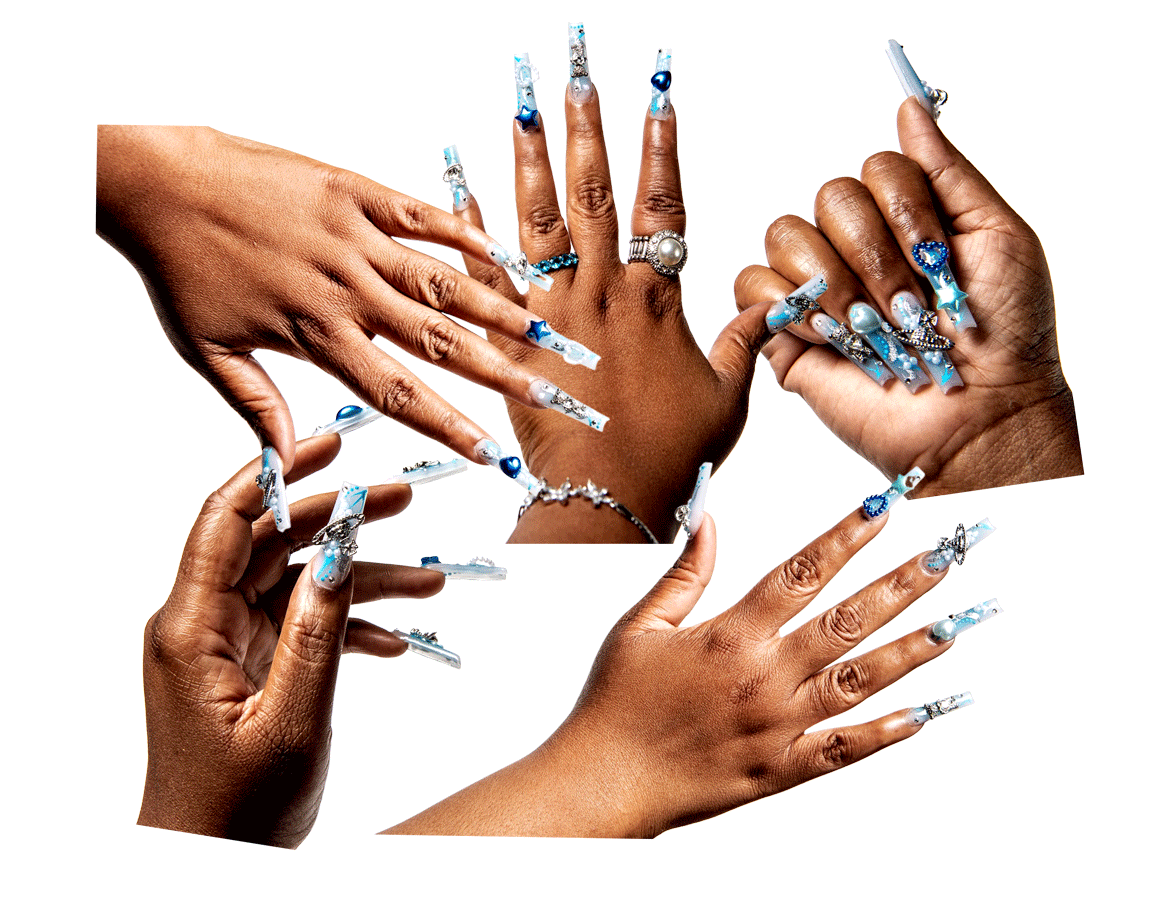
The thing I wish people knew about my job: I wish a lot more people knew that I’m not just doing nails. I own a nail supply as well. I have gel polish, topcoat, charms, acrylic powder (shopnailssbytaya.com).
The thing I love most about my job: Most of the time my clients don’t have a preference. They’re like, “Girl, I know that you’re going to do bomb. I know that you’re not going to upset me. I don’t have to ask my questions.” Most of the time they just let me do what I do.
My green flags in a client: They’re patient, they’re understanding, they know where I’m coming from. If you know it’s worth it, I don’t have anything else to ask of you.
My red flags in a client: One thing that irritates me is when a client looks at their nails [during the process]. Or when they tell you, I want to do this, this and that, this way. I’m like, “Girl. You could have done this yourself.”
The moment I realized doing nails was a form of artistry: A year after I started, I noticed that I put my heart and thoughts into it and realized this is an outlet for me. This is another form of putting myself out there in my creativity.
Photography by Mariah Tauger Los Angeles Times
Chapter IV
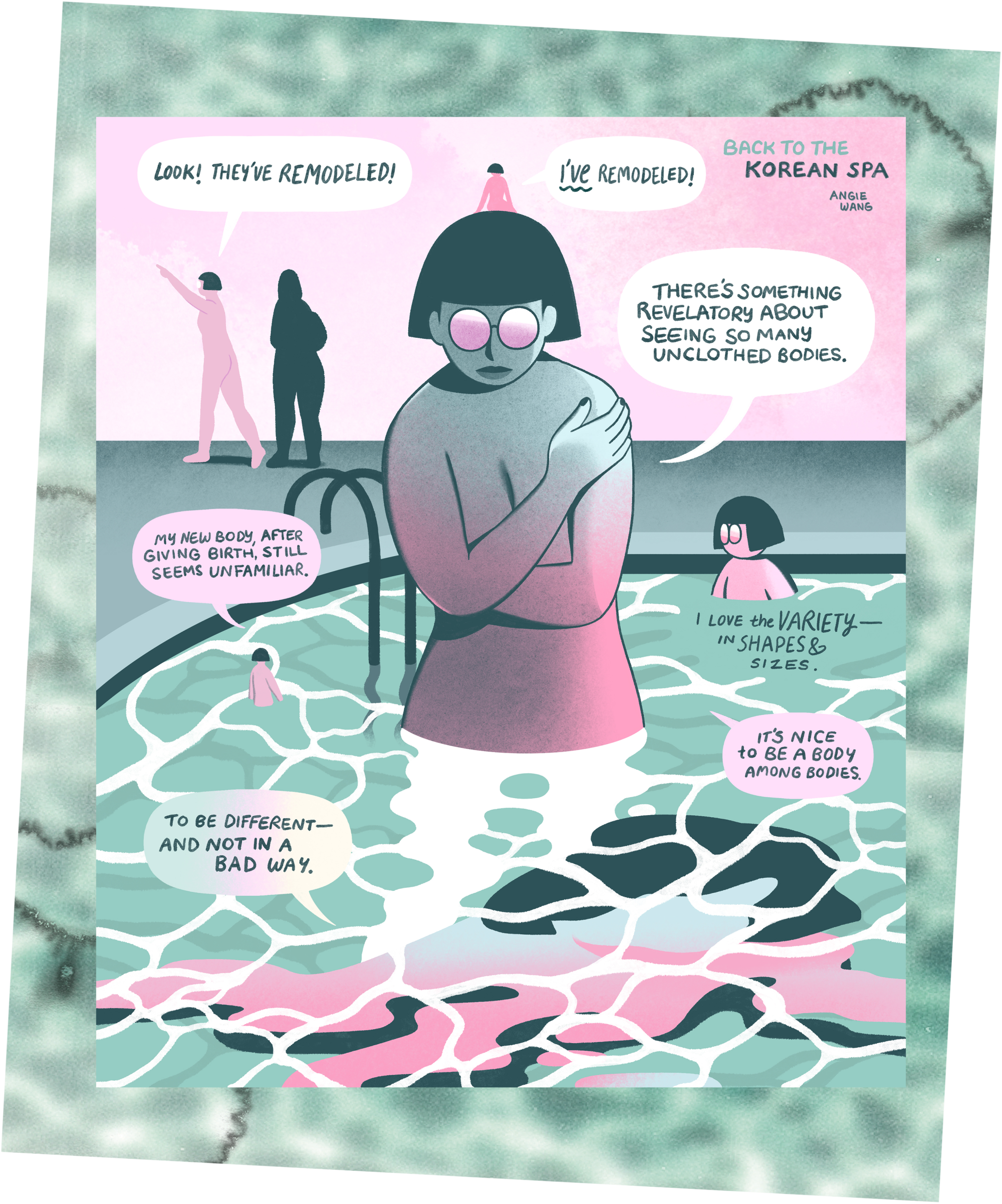
Angie Wang is an illustrator, animator, co-founder of the annual comics festival Comic Arts Los Angeles and a James Beard Award winner. She teaches illustration at USC.
Chapter V
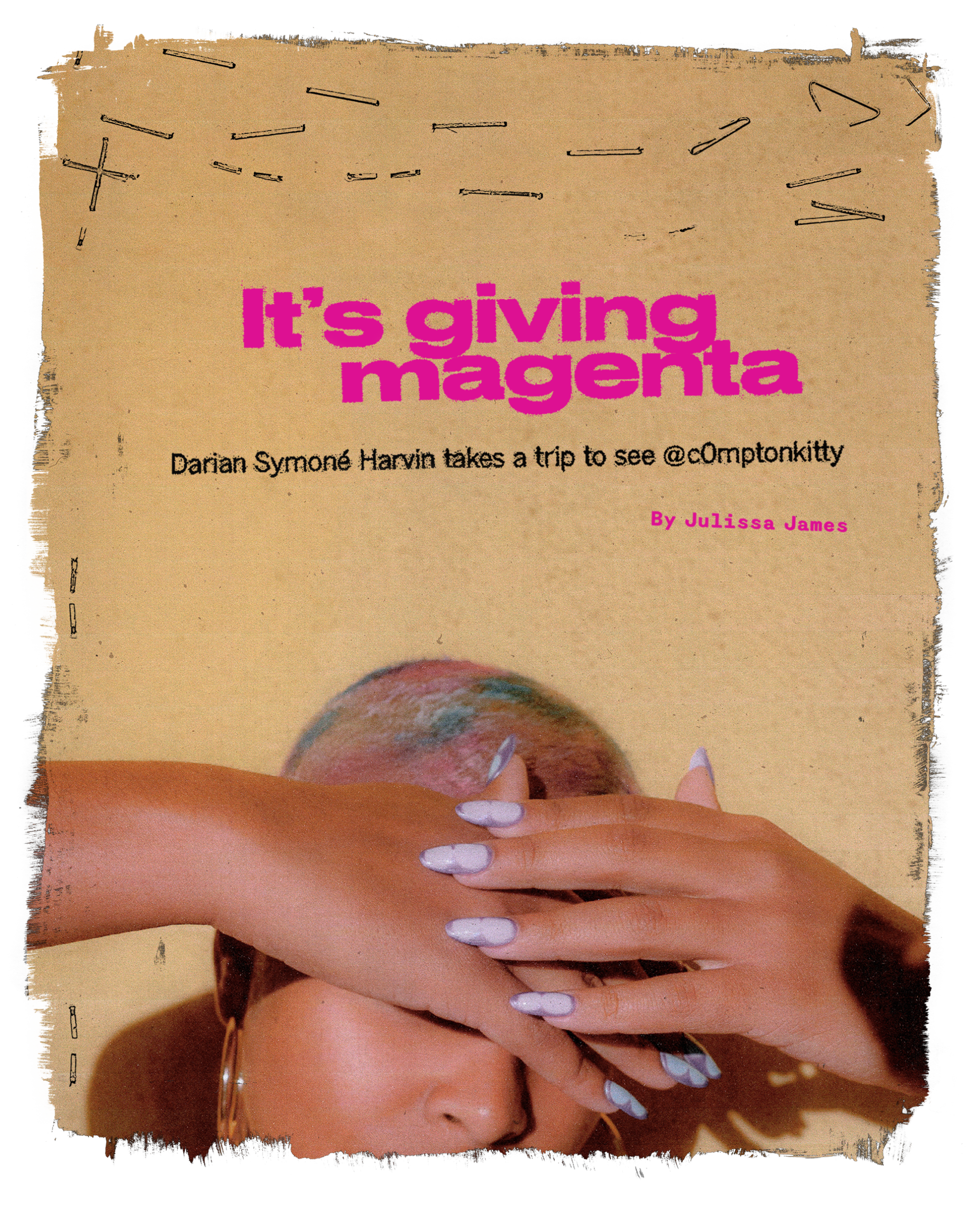
Artist Brenda Huerta has been waiting for someone to ask why she chose the Instagram handle, @c0mptonkitty. She’s been coloring hair in signature vibrant splashes since 2017, and still, it hasn’t come up. For starters, Huerta says, she grew up in Compton, right down the street from the salon where she works today which features paintings of women sporting braids, coils and twists on the window. Huerta, 26, also came of age in the era of Odd Future, where cats were especially symbolic, appearing on Golf Wang merch with their eyes blacked out and upside down crosses marking their foreheads.
Huerta’s Instagram, where her designs fill the grid with cotton candy landscapes on a canvas of bleached fades, has served as catnip for a client roster Huerta describes as like-minded, young, creative people. This includes those who grew up in L.A.. like Huerta’s regular, Leimert Park musician Six Sev — and those who come from further, including Puerto Rican Reggaeton star Rauw Alejandro. The link between all the people who find Huerta, she notes, is a willingness to go there, to experiment, to communicate something through their hair. “It makes it easier to relate to things we’re all about,” Huerta says.
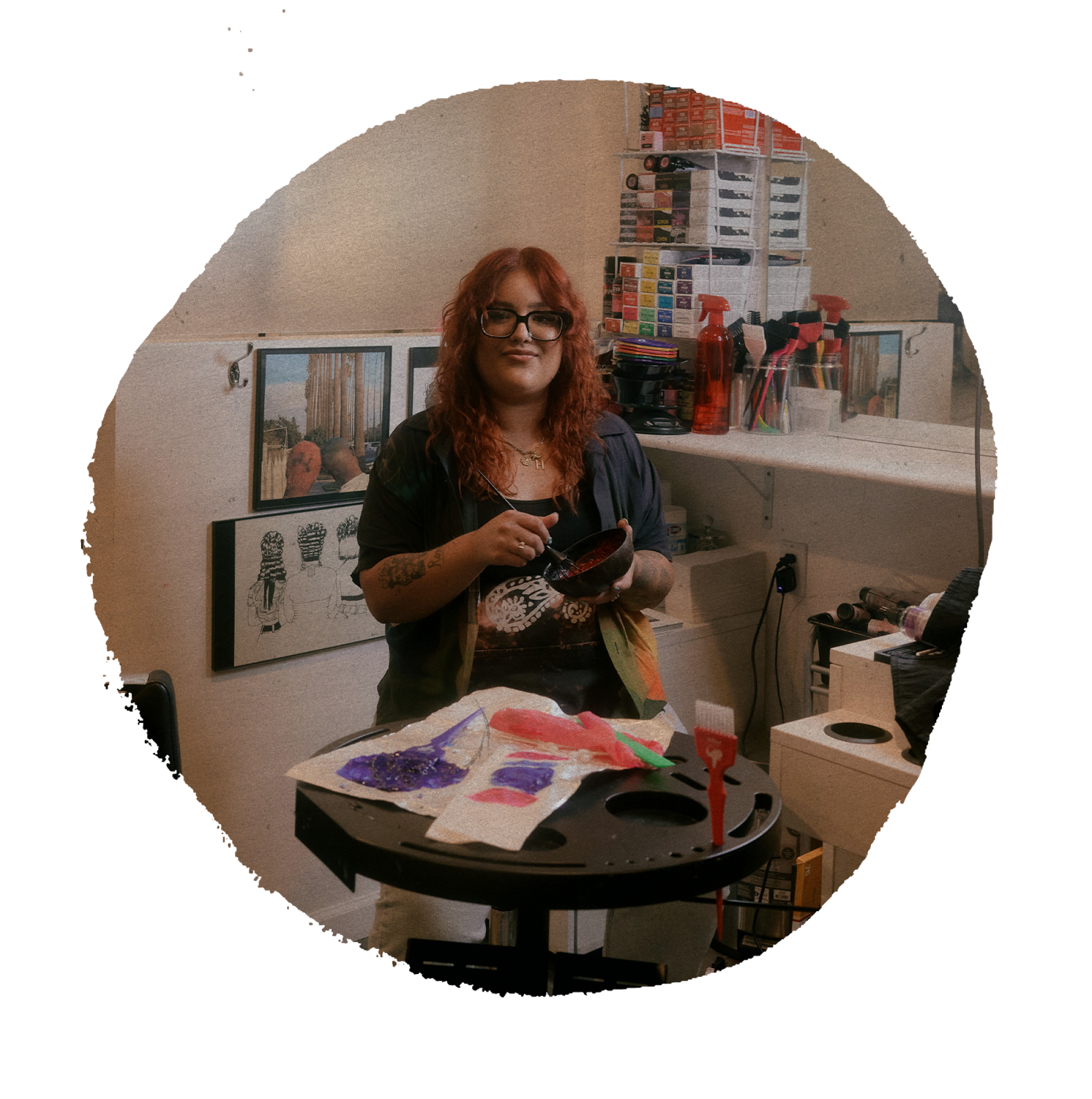
Once the client is in the chair, the dance begins. They’ve thought about this for days, sometimes weeks. They go over their hair’s history in detail, sharing any concerns about damage. They have inspiration pictures, which they pull up on their phone — careful to avoid any inexplicable screenshots. Brenda listens to all this before offering her perspective on what could work, what won’t. She speaks in a direct, casual tone, like that friend you only come to for advice if you want to hear the harsh truth, or their opinion. Reason being: Huerta sees this as a collaboration, a give and take that honor’s the client’s ideas but feels true to her own vision as an artist. She prefers doing abstract, free-form work, finger painting reds, blues, oranges and yellows on short crops or longer locks, rather than doing a stock image replica of, let’s say, a pair of dice with flames surrounding it. (And she never, ever recreates another artist’s work verbatim.)
Image’s beauty editor at large Darian Symoné Harvin was sitting in Brenda’s chair on a hot September afternoon. Harvin cut off her hair early in the summer, since finding a sense of freedom through experimentation, made possible by a newfound detachment to her hair. I was there, too, sitting in as the friend you bring to your hair appointment for company, but ultimately just takes up space, asks unsolicited questions and eats the salon’s free snacks. (For the record, Huerta doesn’t allow clients to bring plus ones.) Harvin and Huerta worked together on a design idea that felt true to both of them, having a conversation that examines the particular relationship between hair stylist and client and highlighting the childlike joy in collaboration.
Darian Symoné Harvin: I used some purple shampoo last night because I thought it would give my hair a little vibrancy. I was hesitant to [bleach] the top even though it started to grow out because I actually just put a little bit of a texturizer on it — so if we put bleach on it, I feel like it’s just going to fall out. I’m gonna pull up my inspo. I want to do something that’s ethereal, but then if we want to ramp it up in some way …
Brenda Huerta: I was already thinking maybe we can add more color in it. I can definitely see the new growth, but obviously I understand your concerns [with bleach]. What I’m worried about is seeing a line where the roots are grown out. What we could do is maybe use a light developer — usually I don’t use anything higher than a 20, which is standard, but I can use a 10, even a 5 — and just go slowly with it, kind of babysit the hair on top.
DSH: Should we just cut the top? In my mind, if we cut it, then it’s less of this [already] bleached hair and we will only bleach my new growth, my whole head. I guess the question is, is there a way just to ultimately bleach my whole head and still get the best result?
BH: I think maybe we [cut it] after. The best idea is to just bleach your whole head as it is now, and then look at the health of your hair once we wash it, and then if we need to cut it, we will.
DSH: That is a good idea. See how I be overthinking? They know.
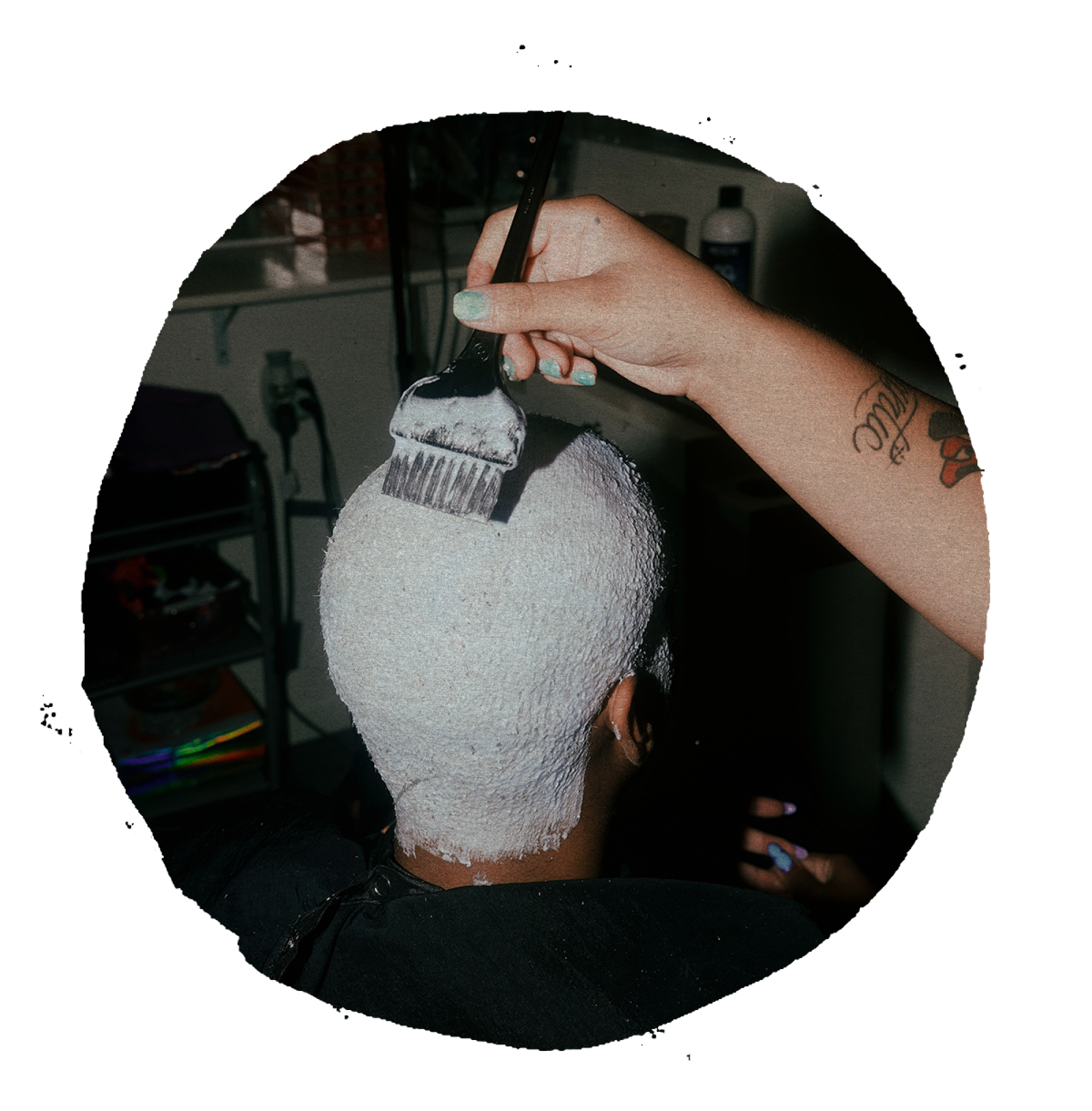
Brenda begins brushing a thick bleach solution across Darian’s head, which has been fortified with the bonder Olaplex to ensure minimal damage. The tingling begins quickly on Darian’s scalp; the dizzying smell of chemicals burns our nostrils just so.
Julissa James: Something I really wanted to ask you both about is the relationship between stylist and client.
DSH: My No. 1 desire is to have a hairstylist you can vibe with and who you have some level of rapport or relatability with. Where you guys can catch up and talk. When I’m in the chair, I’m telling you about my life and also I’m hearing about what you’re up to or how your work is doing. I’m telling you what I’m struggling with right now. And it just feels like an exchange of energy. It almost also feels like problem solving. A lot of times for me when I’m in the chair, it is a bit of a stream of consciousness, because I’m relaxed. Sharing of perspective is really important for me, the same way I would catch up with a friend.
JJ: And do you feel like the quality of that relationship shapes the way you feel about your hair in the end?
DSH: It does. I think it only adds to the confidence. Oftentimes you feel more comfortable saying, “Oh, I don’t really like this.” Or, “I changed my mind a little bit.” Or even ask a question. I mean, I’m a reporter, so I’m asking out of curiosity — what products you use. I want to know what you favor. I want to know what you’re into right now.
JJ: Brenda, you’ve been doing this for the last three, four years. How have you come to understand that dynamic for yourself?
BH: There’s this ongoing joke that when someone gives themselves a hair transformation, they’re going through it. I guess the first step is going to a professional. It’s a give-and-take. They help me in the same way that I help them. This is what I’m passionate about, so it’s the creative expression on my end. But there is a connection with all of them.
Like [Darian] said, I’m catching up with them. I know about their lives. They’re my homegirls. They’re telling me about their love lives, their struggles. I’m like, He did it again? They don’t have to see me all the time, so they’re able to release without judgment. But at the same time, I’m very vocal and my clients already know that.
DSH: Even just that is so important, because that’s who Brenda is. [As a client], you have to be someone who is going to appreciate that when you sit in her chair. This is how you find your person. For me, I love that. I’m very vocal and I’m very in my head so I want to talk to someone who’s going to give me their opinion.
BH: After that first appointment, you already know if they’re going to come back or not. And it’s no hard feelings, I’m just not the stylist for you.
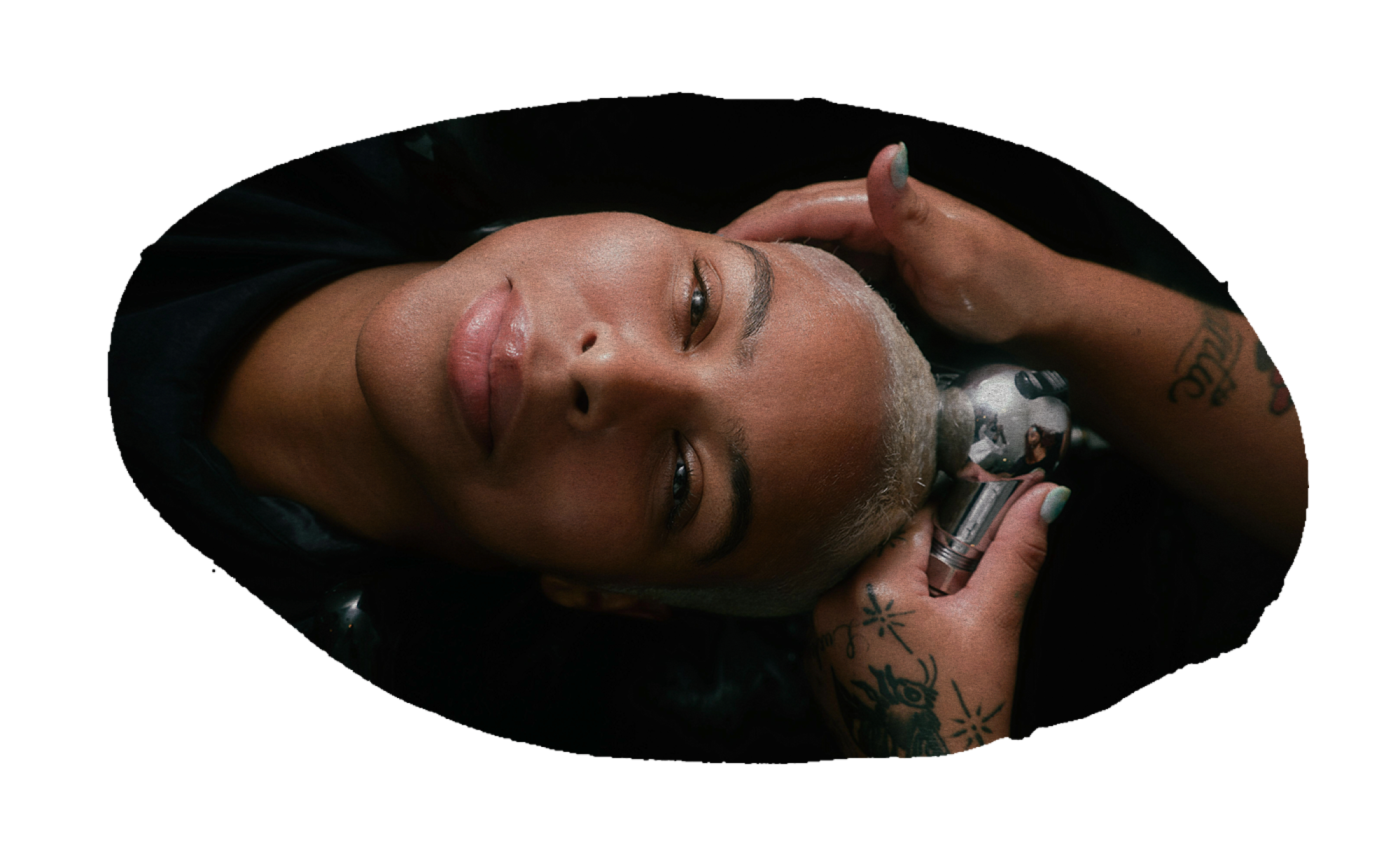
The moment to wash out the bleach comes quickly, and time is of the essence here. After they’re back from the sink, where Brenda washes Darian out with more Olaplex, Darian pulls out her references again and they land on two colors: magenta (“Magenta is all about universal harmony,” Darian says) and a deep turquoise blue. They go back and forth on the style: The options are in a circle, like we imagine most “auras,” radiating out from the center of Darian’s cowlick, or something a little more freeform that still evokes the same feeling. They decide on freeform, and Brenda starts mixing the colors to achieve the perfect level of each — which is her favorite part.
JJ: Brenda, when did you start bleaching your hair?
BH: I grew up in a Catholic school, so I wasn’t really allowed to have colored hair. But the summer before going into high school my aunt helped me. It was in someone’s kitchen, washing my hair over the sink. I tried to get away with having different colors, but it always had to be something a little more natural, like a red. I had to wear a uniform to school, so that was my only way of standing out.
DSH: I’m curious, Brenda, what did you initially think you wanted to do?
BH: I studied psychology in college. I mean, essentially, we’re therapists. And I think this allows me to bring both passions together. I can talk to people and also make them feel confident about themselves — and I get to be creative.
My personal style and what I was influenced by felt very natural to me. I suck at painting, I suck at drawing. [Hair color] just made sense. I’m passionate not just about color but the art of hair. The history of it. Everything.
DSH: When you were like, “Oh, I was thinking we could do more colors,” that is such a level up for me. I have references, but I’m the type of client where I want you to add your touch. This — [referencing a photo of nails designed with a diffused aura] — is just a concept.
BH: Some of the best designs are a collaborative effort. [My designs are] always a collaborative effort because I don’t like to do what people tell me.
JJ: Because you’re an artist, Brenda. You have to feel connected to the piece.
BH: Somebody brings me a photo of someone else’s work? I’m not going to do it.
JJ: Can we talk about that? Because that’s such a thing, right?
BH: Typically, [during a] consultation, I ask them their hair history and then I ask for inspo. Some of them don’t have any inspo to give. I’m like, a photo of a color that you like? Even if it’s a picture of nails. What’s the vibe? Now I understand what you’re going for and then we can start.
JJ: Darian, how did you come up with inspo for your hair today?
DSH: When I’m looking to send an inspiration, I like to go to the artist’s page because that will give me an idea of what they’re into and what they’re proud [of]. I saw a few images on Brenda’s page where I was thinking so much about aura. I had seen some nail references that I already had saved right around just that. But I like to source even from — I like to send pattern, fabrics. I’ve sent, like, dresses.
BH: That’s preferred.
Brenda starts with the magenta, swirling it around Darian’s temples in a whirlpool motion. Magenta here was important: For Darian, the color represents boldness, harmony and asking for what you want. In carrying the color around on her head, she wanted it to communicate that she’s feminine while also being grounded; that she’s confident but doesn’t have all the answers.
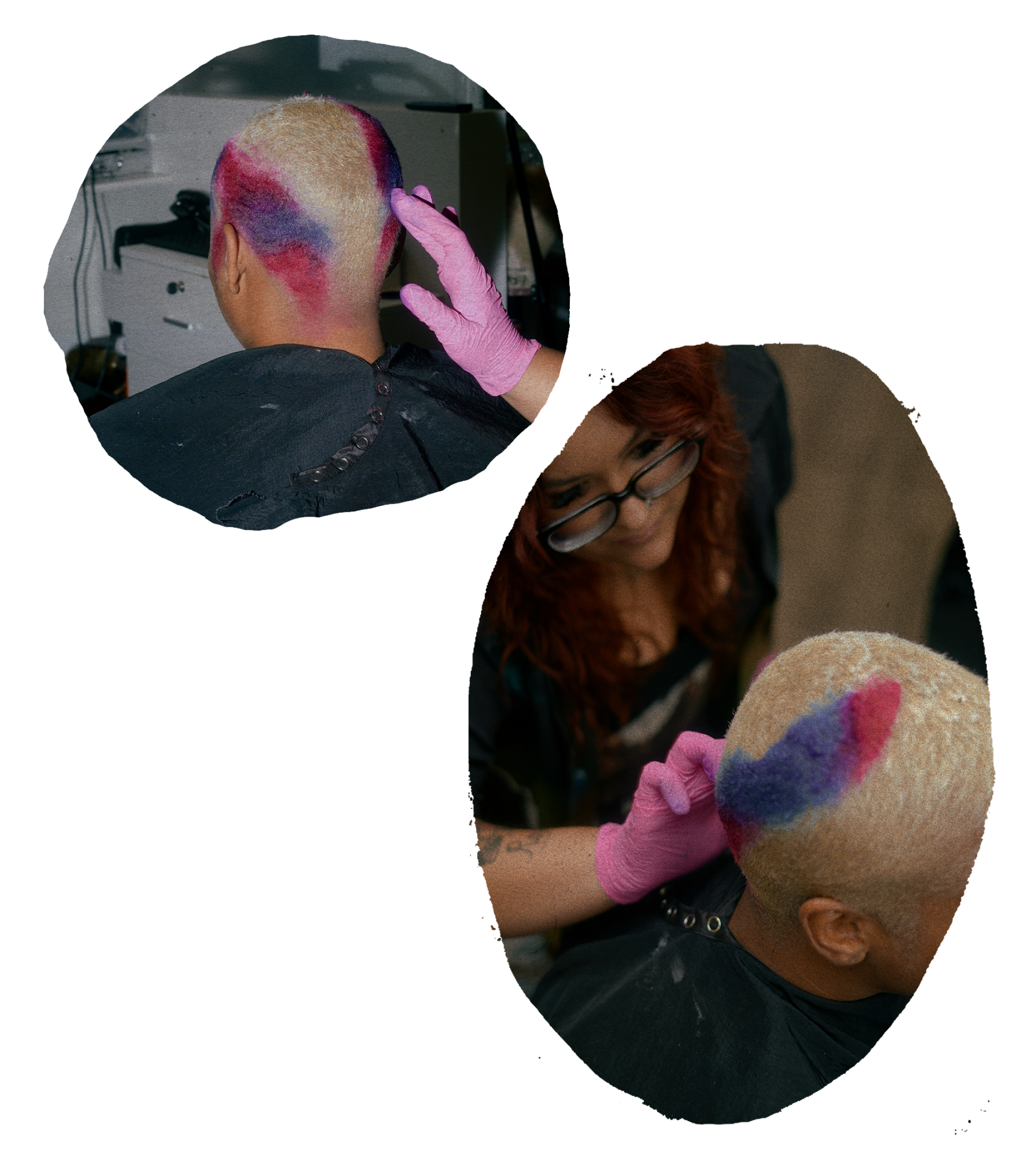
DSH:
I noticed actually in your Instagram that you don’t wear gloves [when you’re painting on hair] and I was like, “Oh, she’s into this.”
BH: It just feels better. I like to be a little bit messy.
JJ: This feels like something that would get you in touch with your inner child — both of you, actually.
DSH: My God, you saying that — just the level of discovery and pride in allowing yourself to go there. Right now, I don’t feel nervous. I don’t feel like, “What am I doing?” I’m just letting it happen.
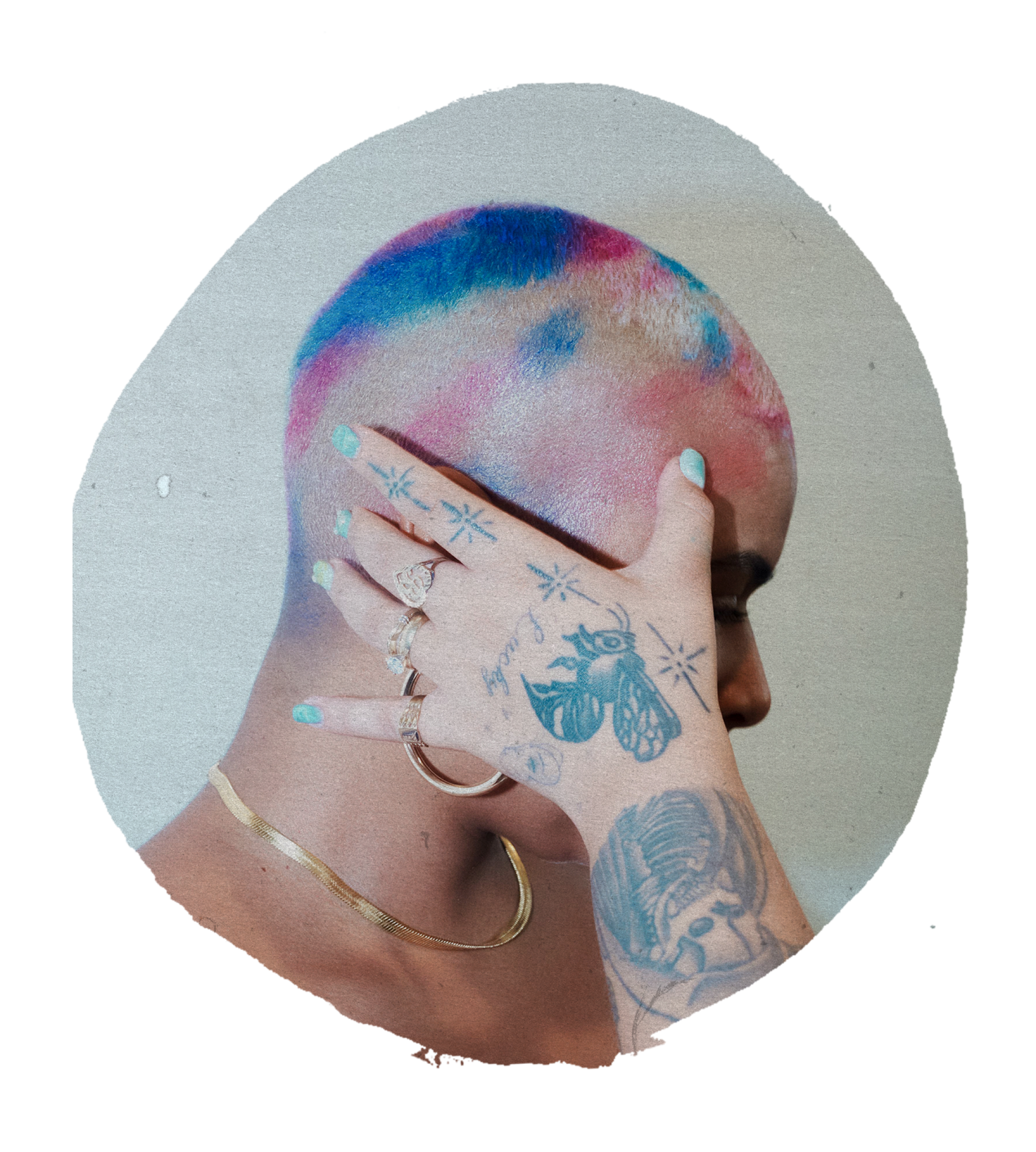
Photography by Jean-Philippe Joseph For The Times
